- Yachts for Sale
- Sales Report 2024
- FAQ – Luxury Crewed Yacht Charters
- FAQ – Bareboat charters
- FAQ – Sell your Boat
- FAQ – Buying a Yacht
- How Much does it Cost to Charter a Luxury Yacht?
- All Blog Posts and News
- Yachting for beginners
- Indian Ocean
- Mediterranean
- Sales & New build
- Motor Yacht
- Event & News


How is a Luxury Yacht doing in Rough Seas?
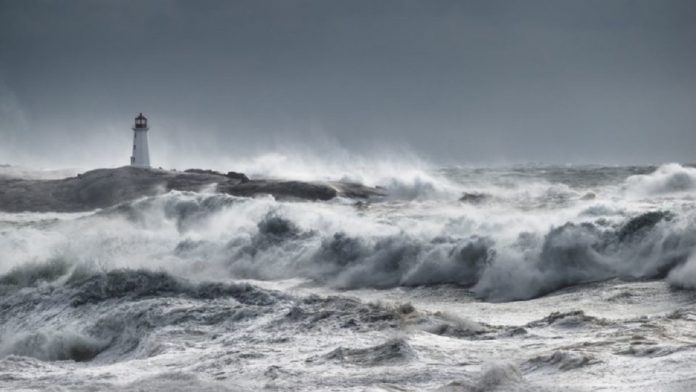
Luxury yachts are the ultimate symbol of indulgence in the world of boating. With their sleek designs, high-tech features and luxurious interiors, these vessels are ideal for those who want to experience the opulence of life at sea. However, when it comes to facing harsh weather conditions, even the most expensive yachts can be tested to their limits. The question is, how well do these luxury yachts perform in rough seas?
What can we call rough sea conditions?
Rough sea conditions refer to the state of the sea characterized by high waves, strong winds, and heavy swells. These conditions are common during storms or extreme weather events, making sailing or boating more challenging and dangerous. The height of waves during rough sea conditions can exceed 3 meters, which can cause vessels to pitch and roll, affecting the stability and safety of the crew and the yacht. Additionally, rough sea conditions can also cause high levels of water spray, making visibility difficult and reducing the effectiveness of navigation aids.
Should you expect to have rough conditions during a yacht charter?
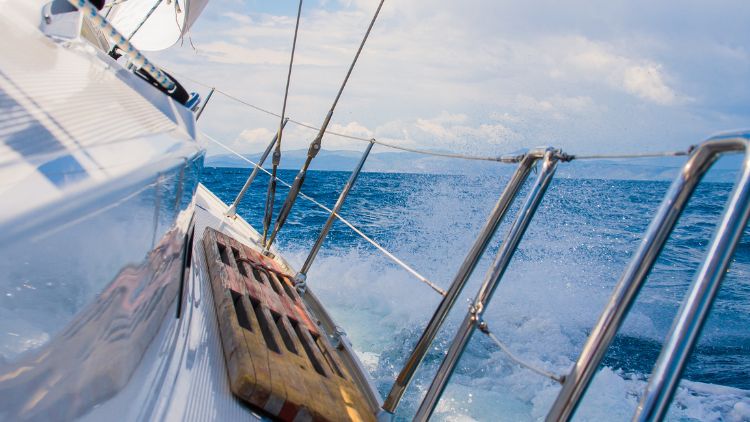
Trimarans are often considered to be some of the best performers in rough waters due to their design features. Their three-hull structure provides increased stability, reducing the rolling motion that can cause seasickness and discomfort. Additionally, the wider beam of trimarans gives them more surface area on the water, improving their stability further. Another benefit of trimarans is their ability to maintain speed in rough seas. The aerodynamic design of their hulls, coupled with the increased stability, allows them to cut through choppy waters while maintaining a relatively smooth ride.
Read also: The Caribbean To Mediterranean Sailing Routes: How To Cross The Atlantic Eastward
Most sailing yachts are resistant in difficult weather conditions
When it comes to sailing yachts, some types are better equipped to handle rough seas than others. One such type is the ocean cruiser, which is designed specifically for long-distance sailing in all conditions. Ocean cruisers typically have a heavier displacement, a deep keel, and a strong hull, which helps them to maintain stability and ride out storms. Another type that excels in rough seas is the bluewater cruiser, which is also designed for offshore sailing. These yachts feature a high freeboard, which keeps the cockpit and cabin drier in heavy seas, and a keel that is deep enough to provide good stability. Other types of yachts, such as performance cruisers or racing yachts, may not be as well-suited for rough seas, as their focus is on speed rather than durability in challenging conditions. It’s worth noting, however, that even the most seaworthy yacht can be overwhelmed in extreme weather, so it’s always important to exercise caution and good judgement when sailing in rough seas.
Motoryachts, especially superyachts and megayachts handle rough sea really well
When it comes to handling rough seas, luxury motor yachts come to the forefront with their exceptional seaworthiness and stability. Superyachts and megayachts, with their larger size and weight, offer a smoother ride in choppy waters. The deep-V hull design found in these larger yachts helps them cut through the waves with ease, reducing the impact of a rough sea. Additionally, these boats often feature advanced technology and stabilisation systems that further minimise uncomfortable motion.
Which types of yachts are the most uncomfortable in rough conditions?
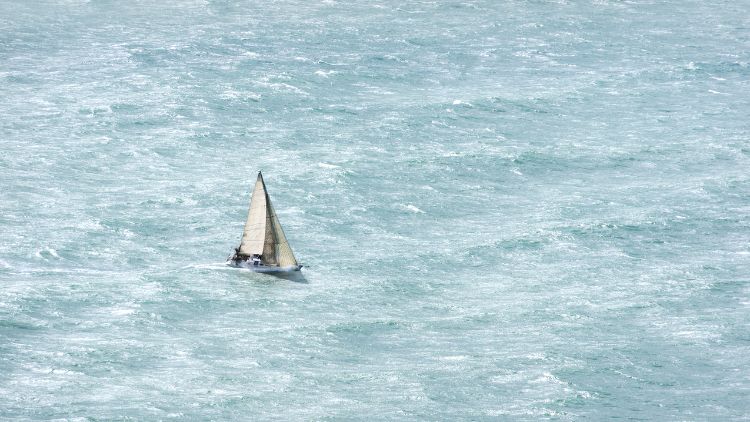
Catamarans are notoriously uncomfortable once the sea is getting too wild
When it comes to yachts and rough conditions, certain types are more prone to discomfort than others. Catamarans, for example, are often cited as being particularly uncomfortable during rough seas. This is due to their design – catamarans feature two parallel hulls that sit above the water. While this design can provide increased stability in calmer waters, it can pose problems when the sea gets choppy. Because the hulls are separate, rather than being connected like a traditional single-hulled yacht, the boat can bounce around more, leading to a rougher ride. Of course, the severity of discomfort will depend on a variety of factors, including the size of the catamaran, the strength of the waves, and the experience of the captain. However, if you know you’re headed into rough waters, it’s worth bearing in mind that a catamaran may not be the most comfortable option.
Monohulls will tilt drastically in bad weather conditions
Monohull yachts are generally considered the most uncomfortable in rough weather conditions. This is because monohulls are more susceptible to tilting or heeling dramatically when the waves become choppy, leading to a much more unstable and uncomfortable ride for those on board. In some cases, the boat may even list to one side or the other, causing occupants to struggle to maintain balance and potentially leading to seasickness. In contrast, multihull yachts such as catamarans are generally considered more stable and comfortable in rough conditions, as their wider hulls and lower center of gravity help them to better withstand the effects of wind and waves..
Read also: Best yachts for transatlantic: our selection and advices
What does it feel like to be in a yacht while the sea is rough?
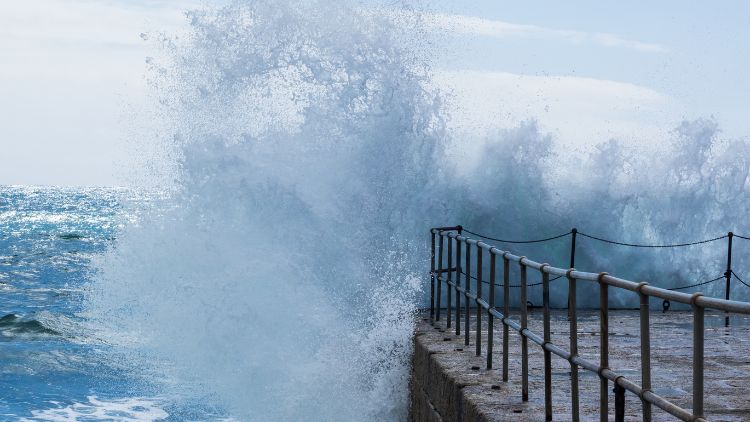
Video: 6 of the best heavy weather sailing videos
- Harriett Ferris
- June 18, 2017
Watch our pick of the most dramatic heavy weather videos

This first video of heavy weather sailing is our from our Storm Sailing Series with Skip Novak . It was probably the most ambitious project Yachting World has ever undertaken: to head for Cape Horn with high latitudes doyen Skip Novak to make a series on Storm Sailing Techniques . Here is one of our most popular videos, rounding Cape Horn in Storm Force 10 conditions…
Hallberg Rassy are known for being heavy, sturdy, seaworthy boats. This video shows Hallberg Rassy 48 Elysium in heavy weather off Cape Gris Nez, northern France in 2014. The yacht seems to be handling well, able to use a Raymarine lineair 7000 autopilot depsite the conditions.
This compilation is from the BT Global Challenge round the world race, a crewed race westabout the prevailing winds in one-design steel 72-footers. It took amateur crews upwind through the Southern Ocean from Cape Horn to New Zealand and from Australia to Cape Town. This footage shows some of the weather they experienced and what the crews endured – and watch out for some footage of the race leaders fighting it out under trysail during a severe storm in the Cook Strait in New Zealand.
Single-handed sailor Berthold Hinrichs sailing in Hinlopenstretet. It is the 150km long strait between Spitsbergen and Nordaustlandet in Svalbard, Norway and can be difficult to pass because of pack ice.
A fun compilation video of sailing in strong breeze including 2 wipeouts, 1 dismasting and 1 guy going for a swim…
Our last example comes from popular YouTube channel Sailing SV Delos , as the crew tackle a 50-knot gale on the crossing to Madagascar. Skip to 8:00 for the stormy stuff:
If you enjoyed this….
Yachting World is the foremost international magazine for bluewater cruisers and offshore sailors. Every month we have practical features to help you plan and prepare to realise your sailing dreams. Build your knowledge month by month with a subscription delivered to your door – and at a discount to the cover price. S ee our latest offers now.
- Motorcycles
- Car of the Month
- Destinations
- Men’s Fashion
- Watch Collector
- Art & Collectibles
- Vacation Homes
- Celebrity Homes
- New Construction
- Home Design
- Electronics
- Fine Dining
- Baja Bay Club
- Costa Palmas
- Fairmont Doha
- Four Seasons Private Residences Dominican Republic at Tropicalia
- Reynolds Lake Oconee
- Scott Dunn Travel
- Wilson Audio
- 672 Wine Club
- Sports & Leisure
- Health & Wellness
- Best of the Best
- The Ultimate Gift Guide
The 13 Fastest Superyachts in the World
These boats prove that size doesn't have to mean slow..
- Share This Article

When American businessman John Staluppi embarked on his yachting journey, it was to break records. He wanted his first yacht to be the first boat over 100 feet to exceed 30 knots, or 34.5 mph. He achieved it with the 118-foot For Your Eyes Only, delivered in 1985. It was also the first motoryacht in the US to have a combination of MTU diesel engines with water-jet propulsion.
His second yacht would smash all previous records. Delivered by Heesen in 1988, Octopussy fulfilled the Bond enthusiast’s aim to break the then 50-knot barrier with a top end of 53.17 knots (61 mph)—a speed that every other shipyard at the time said couldn’t be done. Octopussy immediately entered the record books as the world’s fastest yacht.
“That record was important to me because when you pull into any place there’s always a bigger boat or a prettier boat, but there aren’t many people who can say, ‘Hey, this is the fastest yacht in the world,’” Staluppi told Robb Report .
Heesen’s latest delivery, the 197-foot Ultra G , is one of the Dutch yard’s fastest projects these days, with a propulsion package totaling 22,000 horsepower, including four water jets that deliver a top speed of 37 knots (42.57 mph).
Of course, 43 mph is a paltry number compared to many of the yachts on this list, including the new Bolide 80. That Italian stallion, which will make its debut at the Monaco Yacht Show, runs at a blistering 84 mph. It shows that speed, even in the large motoryacht category, is very much alive.
Here are 13 of the fastest motoryachts, past and present, that have ever been on the water.
1. Bolide 80 | 84 mph

Victory Marine calls the Bolide 80 its first “Hyper Muscle Yacht,” which will be part of a limited-edition series from 60 to 170 feet. Designer Brunello Acampora and his tema of engineers pulled out all the stops on this 80, creating a full-carbon-fiber boat with more than 6,000 horsepower. The multi-stepped hull helps propel the Bolide to its top speed of 70 knots (84 mph), while accomplishing the seemingly impossible task of burning about half the fuel of a much smaller flybridge motoryacht at lower cruising speeds. The designer took care to give the Bolide a streamlined profile, with aerodynamic shapes to reduce resistance. The interior includes the captain’s cabin, a full-sized galley, open salon, and a forward owner’s area with a bedroom, en suite and wardrobe area. It will make its global debut at the Monaco Yacht Show.
2. ‘Foners’ | 80.56 mph

Clocking a thrilling 70.10 knots (80.56 mph), the 136-foot Foners has maintained pole position as the world’s fastest superyacht for over 20 years. Powered by two 1,280hp MAN engines coupled to three Rolls-Royce 6,700 hp gas turbines driving three KaMeWa water jets, the all-aluminum boat is less about piercing waves and more about parting the seas. Delivered in 2000 by Spanish shipyard Izar as the King of Spain’s royal yacht, no expense was spared, including a superstructure lined with Aramid fiber for the express purpose of bulletproofing the interior.
3. ‘World Is Not Enough’ | 77.1 mph

You need to only look at the 007-inspired name to know that World Is Not Enough is another rapid racer commissioned by John Staluppi, this time with an opulent interior designed by his wife Jeanette in partnership with Evan K Marshall. Delivered in 2004 by Millennium Super Yachts, the 139-footer is powered by two Paxman diesel engines and two Lycoming gas turbines to produce a staggering 20,600hp and a breathtaking 67 knots (77.1 mph). When not leaving other boats behind, World Is Not Enough has a cruising range of 3800 nautical miles at a comfortable speed of 10 knots.
4. ‘Galeocerdo’ | 74.8 mph

Wally founder Luca Bassani designed the 118-foot Galeocerdo to maintain speed in rough seas. Launched in 2003 by Rodriquez Yachts, the boat racks up an eye-watering 65 knots (74.8 mph), thanks to its three Vericor TF50 gas turbines, each driving a Rolls-Royce KaMeWa water jet. Another performance-enhancing feature is the lightweight titanium exhaust system designed to resist the extreme temperatures generated by the gas turbines. Wind tunnel tested at the Ferrari facility in Maranello, Italy, the boat generates 16,800hp and a 45-knot (51.8-mph) cruising speed that’s faster than most motoryachts running flat out. It also enjoys a highly futuristic exterior design.
5. Tecnomar for Lamborghini 63 | 72.5 mph

When Italian supercar brand Lamborghini teamed up with yachting stalwart The Italian Sea Group, the end result had to be style and performance. The Tecnomar for Lamborghini 63 is all about the power of ‘63’. Designed and built to celebrate the year 1963 when Ferruccio Lamborghini founded his car company, the 63-footer delivers a whiplashing top speed of 63 knots (72.5 mph). And naturally, it’s one of just 63 in the series that will ever be made. Built out of carbon fiber, it’s fitted with two MAN V12-2000HP engines. MMA fighter Conor McGregor took delivery of hull number one in 2020, which reportedly cost $4 million.
6. ‘Chato’ | 71.9 mph

Back in the mid-1980s, passionate Baglietto customer and leading US Porsche and VW dealer Baron John von Neumann, commissioned a new 85-ft. speed demon from the Italian builder. The entrepreneur was tired of his 34-knot (39-mph) Baglietto getting creamed from Monaco to St. Tropez by faster cruisers. With a hull design by the legendary Alcide Sculati, the all-aluminum Chato came with MTU’s latest 3,480hp V16s coupled to KaMeWa waterjets. Weighing 60 tons, and packing almost 7,000 hp, the military-looking superyacht with its battleship-gray paint and bright-red diagonal hull stripes, hit an astonishing top speed of 62.5 knots (71.9 mph) during sea trials. Chato is currently for sale in the South of France for $715,000.
7. ‘Oci Ciornie’ | 69.04 mph

Oci Ciornie’s Vripack-designed interior may take inspiration from aircraft designs, but it’s the boat’s naval architecture by Don Shead and the combination of two 1,800hp MTU 16V 2000 M90 engines, a 4,600 hp AVCO Lycoming gas turbine and Arneson surface drives that put it on this list. Delivered in 1998 by Palmer Johnson with an aluminum hull, the 82-foot boat thrusts through water at 60 knots (69.04 mph), giving all eight guests the waterborne ride of their lives.
8. ‘Destriero’ | 68 mph

The numbers almost defy logic. With a length of 224 feet, the all-aluminum superyacht Destriero is massive. Now add a trio of GE Aviation LM1600 gas turbines totaling an insane 60,000 hp and the incredulity only increases. Flat out, Destriero could scythe through waves at a staggering 59 knots, or 68 mph. Back in 1992, just one year after its launch, the Fincantieri-built rocketship showed its chops by challenging the famous Blue Riband trans-Atlantic speed record. Averaging 53.09 knots for the 3,106 nautical-mile run, Destriero shattered the record, only to be denied the trophy for being classed as a private yacht and not a commercial passenger vessel. Sadly, today the iconic yacht lies largely abandoned at one of Lurssen’s yards in Germany, awaiting rescue.
9. ‘Ermis²’ | 65.59 mph

Some yachts feature slippery hull designs, others are propelled by rockets, but the McMullen & Wing-built Ermis² is one of the fastest yachts on the superyacht circuit thanks to its lightweight materials. Built from a combination of carbon/epoxy, aerospace grade carbon fiber and titanium, the 123-foot boat taps out at 57 knots (65.59 mph.) Delivered in 2007, its 10,944 horsepower comes from three MTU 16V 4000 M90 engines. Designed inside and out by Rob Humphreys, its classic looks disguise the speed demon within.
10. ‘Why Not U’ | 63.3 mph

Why Not U is a yacht that comfortably cruises at 47 knots (54.1 mph)—a speed most owners only dream of reaching. When time is of the essence, the boat cranks up its Vericor TF40 gas turbine engines to max out at 55 knots (63.3 mph). Delivered by Overmarine in 2001, Why Not U ’s 4.3-foot draft makes it well suited for cruising shallow waters, while its sunbathing areas allow guests to catch some rays traveling at the speed of light.
11. ‘Alamshar’ | 52 mph

Alamshar is another custom collaboration between Donald Blount and Pininfarina commissioned by Aga Khan IV, this time with interiors by Redman Whiteley Dixon. It was reportedly built for an estimated $200 million at the Devonport shipyard in Falmouth, United Kingdom, and took 13 years to complete. When it was eventually delivered in 2014, Alamshar’s top speed of 45 knots (51.78 mph), generated by twin Rolls-Royce Marine engines and three waterjets, seemed worth the wait.
12. ‘Moon Goddess’ | 51.78 mph

Exterior designed by Espen Øino with an interior by Franco Zuretti, the all-aluminum Moon Goddess is a 115-foot yacht with a turquoise hull that matches the color of its oversized leather sunpads. When cruising at 30 knots (34.52 mph) or tearing up the oceans at 45 knots (51.78 mph), most other boats just catch a glimpse of sea spray that the planing yacht leaves in its wake. It’s powered by twin MTU 16V 4000 M90 diesel engines with twin water jets, which generate a combined 7,498 hp.
13. ‘Azzam’ | 35.7 mph

At a staggering 590 feet bow-to-stern, the Lurssen-built Azzam earns the title of world’s longest privately owned gigayacht. But with its remarkable-for-the-size top speed of 31 knots (35.7 mph), it’s also the fastest. Twin 12,000hp MTU V20 turbo-diesels do the day-to-day powering at up to 18 knots (20.7 mph). But crank up the twin GE LM2500 gas turbines, coupled to four Wartsila waterjets, and there’s a staggering 94,000hp on tap. Of course, like Azzam ‘s original owner, it helps if you own a few oil wells: At max speed, the yacht reportedly burns 13 tons of fuel an hour. Launched in 2013 at a reported cost of some $600 million, Azzam accommodates 30 guests pampered by up to 80 crew.
Read More On:
More marine.

This New 131-Foot All-Aluminum Superyacht Lets You Take a Dip at Tip and Tail

This 92-Foot Yacht Has a Deck Big Enough for Your Chopper

Four Seasons Just Unveiled the First Itineraries for Its Luxury Cruise Ship

Lexus Just Unveiled a Speedy New 68-Foot Yacht

Culinary Masters 2024
MAY 17 - 19 Join us for extraordinary meals from the nation’s brightest culinary minds.
Give the Gift of Luxury
Latest Galleries in Marine

Unica 40 in Photos

8 Fascinating Facts About ‘Wayfinder,’ a 224-Foot Catamaran With a Helipad That Doubles as a Pickleball Court
More from our brands, how to watch iheartradio music awards red carpet livestream for free: see the best dressed nominees and stars, washington post story on mulkey unlikely to spark defamation suit, remembering louis gossett jr. in ‘an officer and a gentleman’: his timeless acting elevated the movie drill sergeant into a mythic figure, christie’s secures sale of $30 m. de la cruz collection, the best exercise mats for working out, according to fitness experts.
Can a luxury charter yacht survive rough seas?
- Inspiration
Related News
Popular news this week, popular news this month, latest news.
- Yacht Charter & Superyacht News >
Written by Rachael Steele
When it comes to someone’s first holiday on the water, one of the questions that might be racing through his or her mind is: ‘Can the luxury charter yacht survive rough seas’?
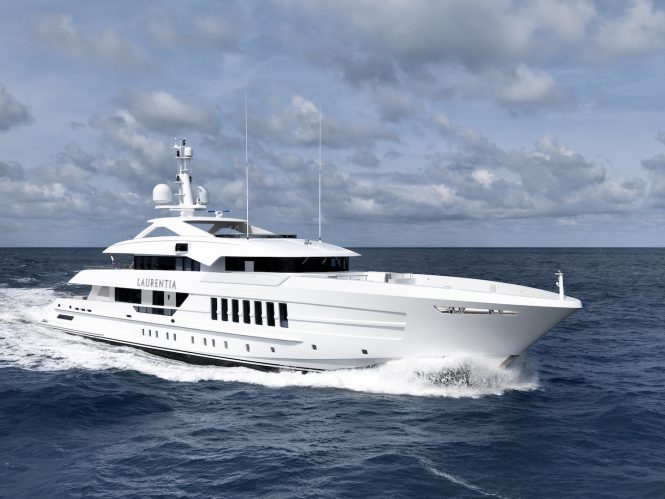
Charter yacht Laurentia
The short answer is ‘yes’, however, this might not reassure the underlying concern of what it takes to damage a vessel to such an extent that the crew and guests are in danger, and a more in-depth look at the situation is required.
Different vessels have different methods other than ballast for ensuring stability in the water: Sailing yachts have keels while motor yachts have stabilisers that reduce the pitch and roll while at anchor (known as ‘zero speed stabilisers’), and some versions can be used even while cruising. Expedition yachts are even expected to encounter rough seas on journeys to remote destinations and are equipped accordingly.
Catamarans and trimarans will have even greater stability, and these vessels are a popular choice for cruising in the Caribbean and Bahamas, where the shallow draft grants access to tranquil anchorages close to the shores.
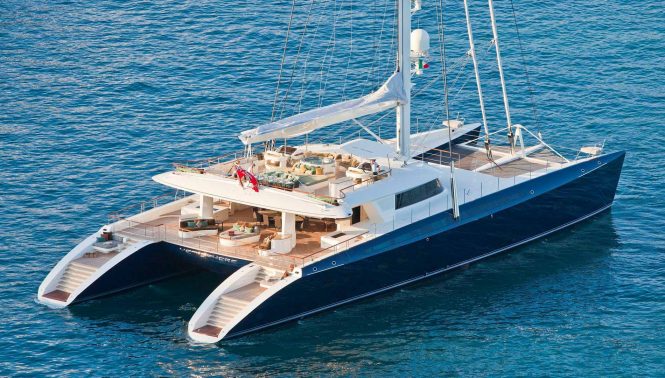
Luxury charter catamaran Hemisphere
During the construction of each unique hull design, naval architects and engineers undertake tank tests to ensure the seaworthiness of the vessel. The Douglas Sea Scale defines ‘rough seas’ as 2.5-4m/4.1-8.2ft with very rough conditions being 4-6m/13-20ft.
At Southampton University tank tests showed that when a wave was 30% as high as the hull length, it was possible to capsize some yachts. However a wave as high as 60% of the hull length capsized all vessels. So the size of a vessel also plays a role in its stability and safety on the water.
For example, to cause danger to a motor yacht of 30m/98ft, a wave must be at least 9m/29ft and as high or higher than 18m/58.8ft to sink the vessel – these wave sizes correlate to the Very High and Phenomenal categories at the top of the Douglas Sea Scale and are unlikely to be encountered unless in hurricane conditions. Under these circumstances, you’d be much happier aboard your sailing yacht or motor yacht than one of the fishing boats in the Cyclades harbours!
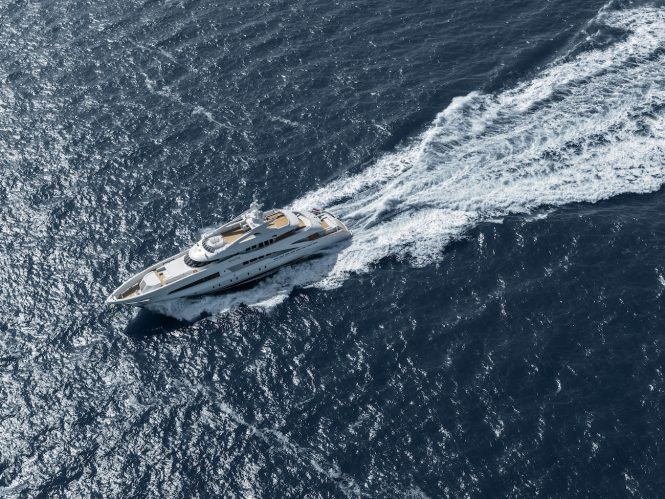
Modern yachts are designed to survive rough seas
However, it is unlikely that you will encounter such conditions during your luxury yacht charter: The Captain receives a daily weather report and will be aware of nearby ports and other sheltered anchorages to wait out the storm, and your professional crew will ensure the safety of everyone on board. Although rough to very rough conditions will make life on board unpleasant for guests and crew alike, both sailing yachts and motor yachts are prepared for such weather.
CONTACT CHARTERWORLD TO ASK ANY QUESTIONS ABOUT A PRIVATE YACHT CHARTER
Please contact CharterWorld - the luxury yacht charter specialist - for more on superyacht news item "Can a luxury charter yacht survive rough seas?".
- Charity & Fund Raising
- CharterWorld News
- Classic Yachts
- Coronavirus
- Cruise Ship
- Ecological Yachts
- Expedition Yachts
- Expert Broker Advice
- Feature Superyachts
- Interior Design
- Legal & VAT Yacht Issues
- Luxury Catamarans
- Luxury Gulet
- Luxury Phinisi
- Luxury Trimarans
- Luxury Yacht Design
- Luxury Yachts
- Marinas & Harbours
- Marine Ecology
- Marine Electronics
- Marine Equipment
- Mega Yachts
- Modern Yachts
- Motor Yachts
- New Launch Yachts
- New To Charter
- Open Style Sports Yachts
- Private Jets
- Sailing Yachts
- Social Media
- Sports Yachts
- Superyacht Crew
- Superyacht Photographers
- Superyacht Products & Supplies
- Superyacht Refits
- Superyacht Reviews
- Superyachts
- Uncategorized
- Yacht Builders
- Yacht Charter
- Yacht Charter Destinations
- Yacht Charter Picks
- Yacht Charter Specials
- Yacht Delivered to Owner
- Yacht Designers
- Yacht Events & Boat Shows
- Yacht Fashion
- Yacht Industry News
- Yacht Photos
- Yacht Racing
- Yacht Racing & Regattas
- Yacht Safety Equipment
- Yacht Support Vessels
- Yacht Tenders
- Yacht Videos
- Yachting Associations
- Yachting Awards
- Yachting Business
- Yachts For Charter
- Yachts For Sale
Quick Enquiry
Superyacht news:.
Email Your Yachting News to: news @ charterworld.com
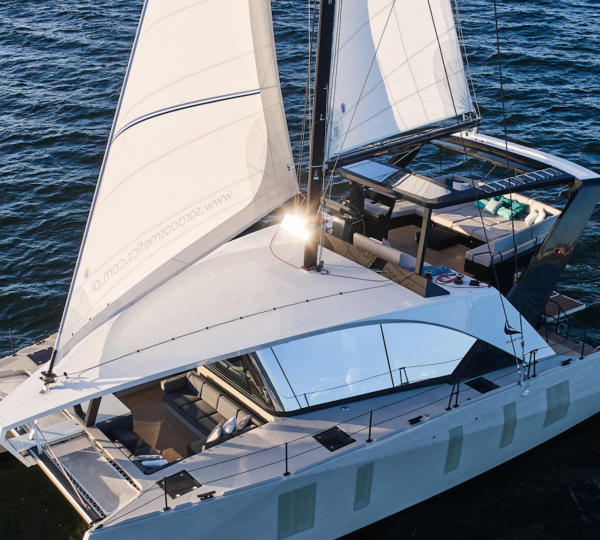
The Caribbean
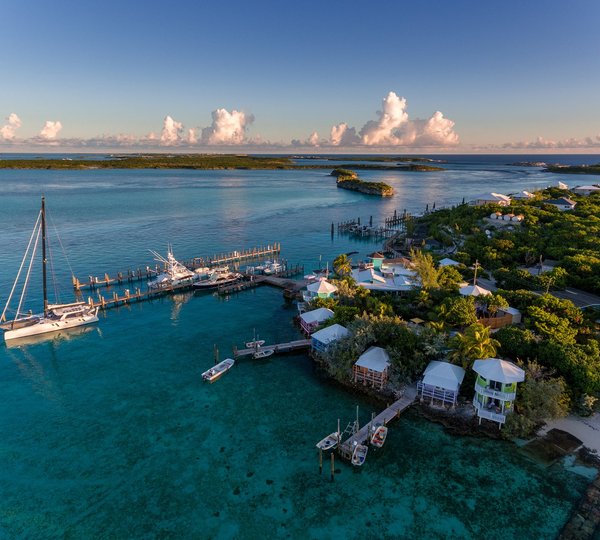
New Luxury Crewed Yachts Available for Charter
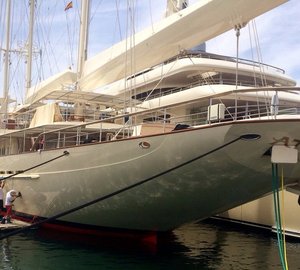
Outstanding 90m Mega Yacht ATHENA coated by Zytexx
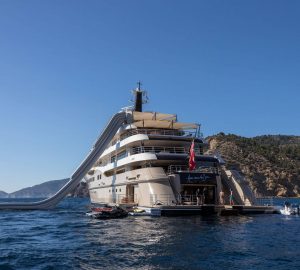
Top 10 most luxurious charter yachts from 2017
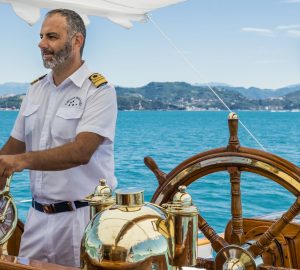
Top 10 charter yachts with classic interior
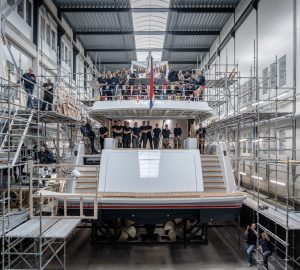
Mulder Yachts Launches the Seventh Mulder ThirtySix, motor yacht Q43
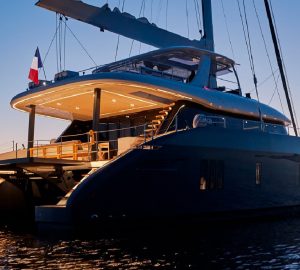
Sailing catamaran FELICITA makes her debut on the charter market
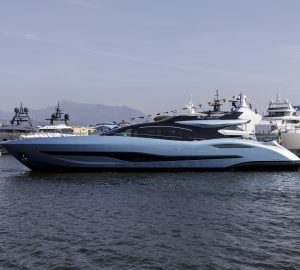
Mangusta announce the launch of the sixth hull in the MANGUSTA 104 REV series
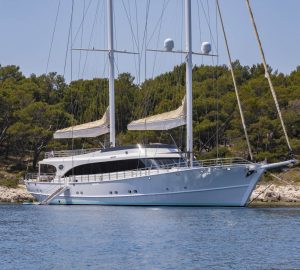
49m sailing yacht ACAPELLA is offering a fabulous June ‘fill the gap’ special offer on charters in Croatia

Explorer style motor yacht ROCKIT available for charter in select locations around the world
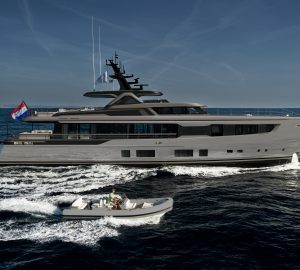
Mulder unveils the luxury yacht MULDER THIRTYSIX Hull #8

Florida charter yacht REAL SUMMERTIME offering 10% discount
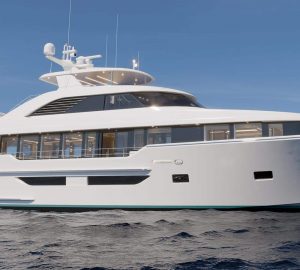
Westport announce the first hull of their 36m W117 range is nearing completion
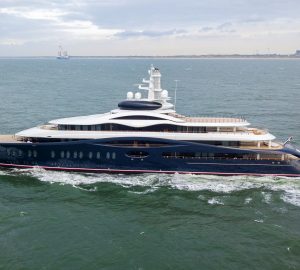
Superyacht LAUNCHPAD previously Feadship 1010 delivered
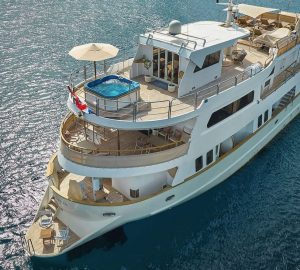
Croatian charter yacht LA PERLA offering 10% discount on exclusive vacations in the Adriatic
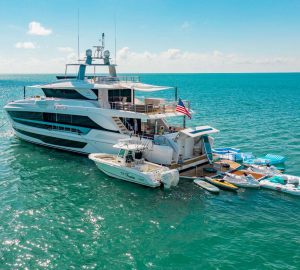
33m luxury yacht FREEDOM for charter in the Caribbean and New England
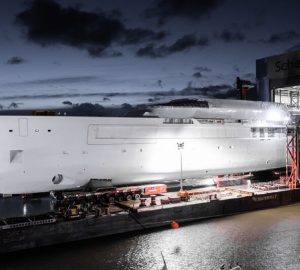
News from Feadship about superyachts PROJECT 712 and PROJECT 715
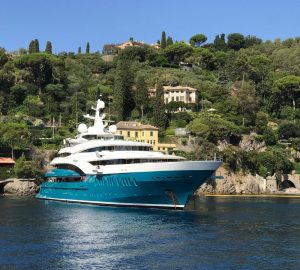
Charter a yacht during the Monaco Historic and F1 Grand Prix festivals and soak up the atmosphere from on deck
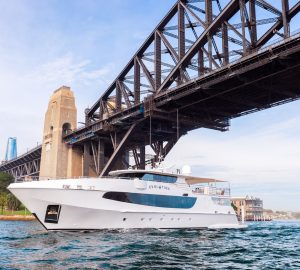
39m luxury yacht EVOLUTION for charter on Australia’s east coast
- Nautic Shows
- America’s Cup
- Classic Yachts
- Motor Yachts
- Sailing Yachts
- Superyachts
- Yachts News
- Destinations
- Yacht Clubs
- Boat Racing
- Meta Yachts

These boats prove that size doesn’t have to mean slow.
When American businessman John Staluppi embarked on his yachting journey, it was to break records. He wanted his first yacht to be the first boat over 100 feet to exceed 30 knots, or 34.5 mph. He achieved it with the 118-foot For Your Eyes Only, delivered in 1985. It was also the first motoryacht in the US to have a combination of MTU diesel engines with water-jet propulsion.
His second yacht would smash all previous records. Delivered by Heesen in 1988, Octopussy fulfilled the Bond enthusiast’s aim to break the then 50-knot barrier with a top end of 53.17 knots (61 mph)—a speed that every other shipyard at the time said couldn’t be done. Octopussy immediately entered the record books as the world’s fastest yacht.
“That record was important to me because when you pull into any place there’s always a bigger boat or a prettier boat, but there aren’t many people who can say, ‘Hey, this is the fastest yacht in the world,’” Staluppi told us .
Heesen’s latest delivery, the 197-foot Ultra G, is one of the Dutch yard’s fastest projects these days, with a propulsion package totaling 22,000 horsepower, including four water jets that deliver a top speed of 37 knots (42.57 mph).
Of course, 43 mph is a paltry number compared to many of the yachts on this list, including the new Bolide 80. That Italian stallion, which will make its debut at the Monaco Yacht Show, runs at a blistering 84 mph. It shows that speed, even in the large motoryacht category, is very much alive.
Here are 13 of the fastest motoryachts, past and present, that have ever been on the water.

Photo : Victory Design
1. Bolide 80 | 84 mph
Victory Marine calls the Bolide 80 its first “Hyper Muscle Yacht,” which will be part of a limited-edition series from 60 to 170 feet. Designer Brunello Acampora and his tema of engineers pulled out all the stops on this 80, creating a full-carbon-fiber boat with more than 6,000 horsepower. The multi-stepped hull helps propel the Bolide to its top speed of 70 knots (84 mph), while accomplishing the seemingly impossible task of burning about half the fuel of a much smaller flybridge motoryacht at lower cruising speeds. The designer took care to give the Bolide a streamlined profile, with aerodynamic shapes to reduce resistance. The interior includes the captain’s cabin, a full-sized galley, open salon, and a forward owner’s area with a bedroom, en suite and wardrobe area. It will make its global debut at the Monaco Yacht Show.

Photo : Wikipedia
2. ‘Foners’ | 80.56 mph
Clocking a thrilling 70.10 knots (80.56 mph), the 136-foot Foners has maintained pole position as the world’s fastest superyacht for over 20 years. Powered by two 1,280hp MAN engines coupled to three Rolls-Royce 6,700 hp gas turbines driving three KaMeWa water jets, the all-aluminum boat is less about piercing waves and more about parting the seas. Delivered in 2000 by Spanish shipyard Izar as the King of Spain’s royal yacht, no expense was spared, including a superstructure lined with Aramid fiber for the express purpose of bulletproofing the interior.

Photo : File photo
3. ‘World Is Not Enough’ | 77.1 mph
You need to only look at the 007-inspired name to know that World Is Not Enough is another rapid racer commissioned by John Staluppi, this time with an opulent interior designed by his wife Jeanette in partnership with Evan K Marshall. Delivered in 2004 by Millennium Super Yachts, the 139-footer is powered by two Paxman diesel engines and two Lycoming gas turbines to produce a staggering 20,600hp and a breathtaking 67 knots (77.1 mph). When not leaving other boats behind, World Is Not Enough has a cruising range of 3800 nautical miles at a comfortable speed of 10 knots.

Photo : File/Rodriguez Yachts

4. ‘Galeocerdo’ | 74.8 mph
Wally founder Luca Bassani designed the 118-foot Galeocerdo to maintain speed in rough seas. Launched in 2003 by Rodriquez Yachts, the boat racks up an eye-watering 65 knots (74.8 mph), thanks to its three Vericor TF50 gas turbines, each driving a Rolls-Royce KaMeWa water jet. Another performance-enhancing feature is the lightweight titanium exhaust system designed to resist the extreme temperatures generated by the gas turbines. Wind tunnel tested at the Ferrari facility in Maranello, Italy, the boat generates 16,800hp and a 45-knot (51.8-mph) cruising speed that’s faster than most motoryachts running flat out. It also enjoys a highly futuristic exterior design.

Photo : Italian Sea Group
5. Tecnomar for Lamborghini 63 | 72.5 mph
When Italian supercar brand Lamborghini teamed up with yachting stalwart The Italian Sea Group, the end result had to be style and performance. The Tecnomar for Lamborghini 63 is all about the power of ‘63’. Designed and built to celebrate the year 1963 when Ferruccio Lamborghini founded his car company, the 63-footer delivers a whiplashing top speed of 63 knots (72.5 mph). And naturally, it’s one of just 63 in the series that will ever be made. Built out of carbon fiber, it’s fitted with two MAN V12-2000HP engines. MMA fighter Conor McGregor took delivery of hull number one in 2020, which reportedly cost $4 million.

Photo : Courtesy Baglietto
6. ‘Chato’ | 71.9 mph
Back in the mid-1980s, passionate Baglietto customer and leading US Porsche and VW dealer Baron John von Neumann, commissioned a new 85-ft. speed demon from the Italian builder. The entrepreneur was tired of his 34-knot (39-mph) Baglietto getting creamed from Monaco to St. Tropez by faster cruisers. With a hull design by the legendary Alcide Sculati, the all-aluminum Chato came with MTU’s latest 3,480hp V16s coupled to KaMeWa waterjets. Weighing 60 tons, and packing almost 7,000 hp, the military-looking superyacht with its battleship-gray paint and bright-red diagonal hull stripes, hit an astonishing top speed of 62.5 knots (71.9 mph) during sea trials. Chato is currently for sale in the South of France for $715,000.

Photo : Palmer Johnson
7. ‘Oci Ciornie’ | 69.04 mph
Oci Ciornie’s Vripack-designed interior may take inspiration from aircraft designs, but it’s the boat’s naval architecture by Don Shead and the combination of two 1,800hp MTU 16V 2000 M90 engines, a 4,600 hp AVCO Lycoming gas turbine and Arneson surface drives that put it on this list. Delivered in 1998 by Palmer Johnson with an aluminum hull, the 82-foot boat thrusts through water at 60 knots (69.04 mph), giving all eight guests the waterborne ride of their lives.

Photo : Courtesy Fincantieri
8. ‘Destriero’ | 68 mph
The numbers almost defy logic. With a length of 224 feet, the all-aluminum superyacht Destriero is massive. Now add a trio of GE Aviation LM1600 gas turbines totaling an insane 60,000 hp and the incredulity only increases. Flat out, Destriero could scythe through waves at a staggering 59 knots, or 68 mph. Back in 1992, just one year after its launch, the Fincantieri-built rocketship showed its chops by challenging the famous Blue Riband trans-Atlantic speed record. Averaging 53.09 knots for the 3,106 nautical-mile run, Destriero shattered the record, only to be denied the trophy for being classed as a private yacht and not a commercial passenger vessel. Sadly, today the iconic yacht lies largely abandoned at one of Lurssen’s yards in Germany, awaiting rescue.

Photo : McMullen & Wing
9. ‘Ermis²’ | 65.59 mph
Some yachts feature slippery hull designs, others are propelled by rockets, but the McMullen & Wing-built Ermis² is one of the fastest yachts on the superyacht circuit thanks to its lightweight materials. Built from a combination of carbon/epoxy, aerospace grade carbon fiber and titanium, the 123-foot boat taps out at 57 knots (65.59 mph.) Delivered in 2007, its 10,944 horsepower comes from three MTU 16V 4000 M90 engines. Designed inside and out by Rob Humphreys, its classic looks disguise the speed demon within.

Photo : Overmarine
10. ‘Why Not U’ | 63.3 mph
Why Not U is a yacht that comfortably cruises at 47 knots (54.1 mph)—a speed most owners only dream of reaching. When time is of the essence, the boat cranks up its Vericor TF40 gas turbine engines to max out at 55 knots (63.3 mph). Delivered by Overmarine in 2001, Why Not U ’s 4.3-foot draft makes it well suited for cruising shallow waters, while its sunbathing areas allow guests to catch some rays traveling at the speed of light.

Photo : File Photo
11. ‘Alamshar’ | 52 mph
Alamshar is another custom collaboration between Donald Blount and Pininfarina commissioned by Aga Khan IV, this time with interiors by Redman Whiteley Dixon. It was reportedly built for an estimated $200 million at the Devonport shipyard in Falmouth, United Kingdom, and took 13 years to complete. When it was eventually delivered in 2014, Alamshar’s top speed of 45 knots (51.78 mph), generated by twin Rolls-Royce Marine engines and three waterjets, seemed worth the wait.

Photo : Camper & NIcholsons
12. ‘Moon Goddess’ | 51.78 mph
Exterior designed by Espen Øino with an interior by Franco Zuretti, the all-aluminum Moon Goddess is a 115-foot yacht with a turquoise hull that matches the color of its oversized leather sunpads. When cruising at 30 knots (34.52 mph) or tearing up the oceans at 45 knots (51.78 mph), most other boats just catch a glimpse of sea spray that the planing yacht leaves in its wake. It’s powered by twin MTU 16V 4000 M90 diesel engines with twin water jets, which generate a combined 7,498 hp.

Photo : Courtesy Lurssen
13. ‘Azzam’ | 35.7 mph
At a staggering 590 feet bow-to-stern, the Lurssen-built Azzam earns the title of world’s longest privately owned gigayacht. But with its remarkable-for-the-size top speed of 31 knots (35.7 mph), it’s also the fastest. Twin 12,000hp MTU V20 turbo-diesels do the day-to-day powering at up to 18 knots (20.7 mph). But crank up the twin GE LM2500 gas turbines, coupled to four Wartsila waterjets, and there’s a staggering 94,000hp on tap. Of course, like Azzam ‘s original owner, it helps if you own a few oil wells: At max speed, the yacht reportedly burns 13 tons of fuel an hour. Launched in 2013 at a reported cost of some $600 million, Azzam accommodates 30 guests pampered by up to 80 crew.
- superyachts
RELATED ARTICLES
Zeelander yachts reveals stylish interior to keenly awaited new flagship yacht zeelander 8, damen yachting launches second yacht support 53, conrad shipyard launches extra time, enter a new era of superyacht design: sunseeker unveils the latest on the groundbreaking 120 yacht, wider launches its first wilder 60, world’s largest sportfish 52m project 406 launched in amsterdam.

Subscribe to our newsletter
To be updated with all the latest news, offers and special announcements.
LATEST ARTICLES
Unleashing potential: emirates team new zealand’s two-boat training session, foiling awards: these are the best “flying” boats of 2024, editor picks, canadian beau lake introduces the tahoe ’14 and lugano ’14 electric runabouts, underwater adventure and exploration with deepflight’s super falcon 3s, driving performance on land and on water: 41′ amg carbon edition, popular posts, young designer of the year 2022: ioana valentina corcodel reveals 65m ophelia concept, mirabaud sailing video of the century: celebrating 2 decades of passion, superyacht the flying fox seized in the dominican republic, popular category.
- Regatta 807
- America's Cup 384
- Motor Yachts 261
- Boating 215
- Superyachts 183
- Sailing 177
- Yachts News 174
- Sailing Yachts 162

Can Superyachts Cross The Atlantic?
Superyachts are some of the most formidable private vessels on the ocean, but are they capable of crossing the Atlantic Ocean?
Superyachts can definitely cross the Atlantic – some with absolute ease. There are routes from the United States to Europe that stretch for just over three thousand miles, a distance which some superyachts can swallow up in no time. They’re also big enough to handle any adverse Atlantic weather.

Read on to learn more about superyachts and their dominance over the world’s oceans.
Set Sail On The Sea In Your Superyacht
If you’ve got tens of millions of dollars laying around doing absolutely nothing, why not invest in a superyacht? They’re perfect for exploring the world, especially if you want to do so in what is essentially a floating mansion.
There are few things more lavish or extravagant than a superyacht. They’re regularly seen in the world’s most luxurious resorts and harbors around the world and are almost exclusively reserved for society’s elite.
At the highest end of the spectrum, superyachts come in sizes that rival some small hotels and boast price tags of hundreds of millions of dollars. They come equipped with state of the art technology, and they’re often made with the finest materials and sumptuous fittings.
If you don’t want to buy one, you can lease them from numerous brokers that specialize in yacht rental. However, going down that route will still cost you around a quarter of a million dollars a week – at least.
Ultimately, superyachts are intensely unique, with each one differing dramatically from the next. They’re designed and built on a case-by-case basis, a process that often features architects, interior designers, and engineers.
This is why some superyachts become incredibly prolific, with ‘fans’ actively trying to spot them when they’re out around the world’s oceans. For example, yacht hunting is a common activity in places like Monaco, Sardinia, Portofino, Saint-Tropez, and Abu Dhabi.
There’s little restriction surrounding the piloting of these superyachts, and they’re more or less open to travel wherever they so desire. Of course, this means they’ll sometimes have to contend with some of the world’s biggest oceans.
In this article, we’re going to discuss superyachts crossing the Atlantic Ocean. However, if you’d like to find out whether superyachts can cross the gargantuan Pacific Ocean, you can do so here .
Advance Across The Atlantic
While the Atlantic Ocean might seem like a daunting thing to cross, it’s actually an extremely common thing to do. Every day, hundreds of vessels make the crossing, including cargo ships, passenger liners, and military vessels.
This traffic also includes numerous superyachts, ferrying wealthy passengers and owners from Europe to the United States. Alternatively, they could be traveling from the Caribbean to Africa, or Canada to the United Kingdom.
It’s ultimately up to the owner where the superyacht travels, and as long as they have enough fuel in the tank, the Atlantic doesn’t pose much of an obstacle. It is a long crossing, true, but they’ll be doing it in some of the most luxurious circumstances possible.
It can take anything from ten days to three weeks to successfully navigate the Atlantic Ocean. If the conditions are fair and the ship’s course doesn’t have to be altered too much, the journey will be much faster.
There are some superyachts that can make the crossing on a single tank of fuel, without breaking a sweat. At the higher end of the spectrum, this includes the Azzam , one of the largest yachts in the world with a value of almost half a billion dollars.
Azzam is powered by enormous and economical engines that produce a cruising speed of around eighteen knots. It’s such a huge superyacht that one hundred people can comfortably live aboard, all at the same time.
Quite simply, it’s one of the most luxurious and opulent vessels in the world, with a drastic amount of amenities and technology. Before Azzam was launched in 2013, more than four thousand people were involved in her construction.
This is just one of a few superyachts that can cross the Atlantic with ease. In fact, there’s a whole category of superyacht built to travel extremely long distances.
They’re known as ‘explorer’ yachts, and they’re specially designed to travel in the more adverse conditions, and across the widest oceans. The best example is the Octopus , a 126-meter superyacht with a value of three hundred million dollars.
If you’re going to cross any super-wide ocean paths, there are few better ways to do it than in one of these vessels.
- Privacy Policy
© 2021 Black Sands Media - All Rights Reserved
- Food & Drink
- Leisure & Recreation
- Art & Collectibles

- Charter & Brokerage
- Yacht Design & New Builds
- Tenders & Toys
- Superyacht Events Calendar
- Career & Training
- Departments
- Superyacht Crew Finances
- Sustainability
- Shipyards and Marinas
- Health & Wellbeing
- Polar Region
- Our Services
- Meet the Team
Weathering the Storm: How Superyacht Crew Prepare for Rough Seas
.png)
Every seasoned crew member understands the unpredictability of the sea, and rough seas are certainly an inevitable part of the job. As you are responsible for ensuring the safety and comfort of both guests and the yacht itself, it is crucial to understand the necessary preparations to make. In this article, we take you through how Superyacht crews navigate the challenges of rough seas, when nature throws a curveball.
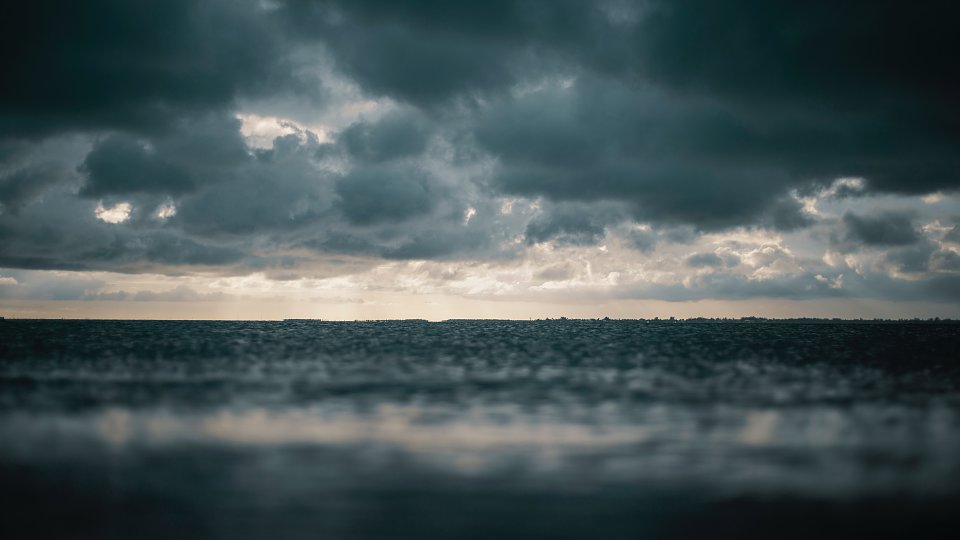
1. Weather Forecasting
The first line of defense against rough seas is accurate weather forecasting.
Make sure that your team diligently monitors weather patterns and forecasts to anticipate challenging conditions. Understanding the nuances of wind, waves, and storms allows your crew to plan routes that minimize the impact of rough seas, ensuring a smoother experience for everyone on board.
2. Securing Loose Items
Once the crew is aware of impending rough seas, securing loose items becomes a top priority.
Superyachts are floating paradises – but in rough seas, even the most well-designed interiors can become a potential hazard. Be sure to stow away loose items, securing furniture, glassware, and other accessories to prevent damage and ensure the safety of guests and crew alike.
3. Wear The Right Clothing
When there’s precipitation, air temperature drops and humidity rises.
Consequently, it’s important to pack a very warm outfit, preferably water-repellent. You won’t want to freeze, so get into your gear quickly! Don’t forget life vests and safety harnesses, either.
4. Ensure Your Superyacht Is Dry
Seal all exterior or interior hatches to prevent water from entering your yacht, and maintain a dry saloon by shutting the companionway. If your vessel has a deckhouse, remember to raise its top.
5. Monitor Guests’ Well-Being
Superyacht crew members are not just skilled sailors – they are also hospitality experts.
In rough seas, you should pay extra attention to the well-being of guests, offering support and assistance to those who may be susceptible to seasickness. In the galley, it might be worth opting for lighter and easily digestible meals to ensure that guests and crew members can enjoy delicious cuisine without compromising their comfort.
6. Is There A Nearby Port?
To take shelter, try and locate a safe harbour. Keeping track of nearby locations is a way of ensuring minimal interaction with rough seas. However, not to dock your vessel when there’s a strong offshore wind – but a large enough, protected harbour might be accessible for you.
To keep up to date with the latest Superyacht Content News, click here .
Sign up to our Newsletter below:
Newsletter Signup
- Your Name First Last
- Your Email *

Maisie Granger
Related articles, how easy is it finding yacht crew jobs as a couple, what’s new with ayss in 2024. membership benefits & their new chair, 14 nautical reads for world book day, private or charter. which is best for you.

Popular Posts
- Our Month in Review: Magnificent May
- Torqeedo Announces Development Of New ‘Smart Motor Technology’
- H2 Have A Sleek New Concept To Show Us
- 2022 Sustainability trends
- M/Y Seven Seas for Sale
Superyacht Content
Social media influencer and digital brand expert.
Superyacht Content brings you the latest in social news for the superyacht industry.
Keep up to date with us across our social channels, and don’t forget to hit that share button!
- Superyacht News
- Superyacht Jobs
- Superyacht Marketing
Join our Newsletter
Copyright © 2023 Superyacht Content | Website Design by Zonkey
Privacy | Credits | Get in Touch

- Green Propulsion
- Renewable Energy
- Energy efficiency
- Sustainable materials
- News & Events
- Sunreef News Magazine
- Press About Sunreef

- 60 Sunreef Power
- 70 Sunreef Power
- 80 Sunreef Power
- 100 Sunreef Power
- Sunreef Supreme Power
- Sunreef Ultima Range
- Sunreef 44 Ultima
- Sunreef 55 Ultima
- Sunreef 66 Ultima
- Sunreef 77 Ultima
- Sunreef 88 Ultima
- Sunreef fleet

- Sunreef Zero Cat
- Sunreef 100 Eco
- Sunreef Fleet

- Sunreef 43M
- 49M Sunreef Power
- 210 Sunreef Power Trimaran
- Sunreef Explorer
- 40M Sunreef Explorer
- 40M Sunreef Explorer Eco
- 50M Sunreef Explorer
- Superyacht Fleet
40M SUNREEF EXPLORER
- Sustainable
ASK ABOUT THIS YACHT

The 40M Sunreef Explorer is a versatile multihull craft dedicated to discovering new horizons. Her propulsion options allow for transoceanic range and solid performance in rough seas. Blending elegance and modern technology, this luxury power catamaran can be heavily customized to match ambitious navigation plans.
The extended aft deck houses a launching crane, a 7m tender, two jet skis, and storage for a variety of water toys. With the hydraulic aft platform lowered, guests can enjoy a full-beam private beach on the luxury catamaran. The 40m superyachts’ 13.34m beam provides for immense living areas, totaling 654m² with accommodation spreading across three decks.
Custom features available for the interiors of the electric catamaran include a playroom with a self-leveling pool table, a steam room, or a master suite with a private fold-out balcony. Alfresco relaxation areas include a large sun lounge with a spa pool surrounded by oversized sunpads and a bar as well as a vast bow terrace. Contact us now to inquiries about 40m Sunreef Explorer.
SPECIFICATION
- ECO VERSION
- CLASSIC VERSION
Construction
38 m / 124.7 Ft
Length overall
13.34 m / 43.8 Ft
Beam overall
Sunreef Yachts
Naval architecture
654 m² / 7039.6 Ft²
Living space
READ MORE ABOUT MODEL

PRESS ABOUT MODEL

BARCHE | 2022-09

MULTIHULLS WORLD | 2020-11
Comments are closed.
SUBSCRIBE TO OUR NEWSLETTER
- Sailing Yachts
- Power Yachts
- Superyachts
- Making a Change
- Green Concept
- Energy Efficiency
- Sustainable Materials
- Eco Q&A
Copyright © 2024 Sunreef Yachts . All rights reserved.
- Whistleblowing
- Privacy Policy

Sunreef Venture S.A.
Sunreef Yachts Shipyard
ul. Tarcice 6
80-718 Gdańsk, Poland
+48 58 769 77 77
Boat Reviews
- Aquila Boat Reviews
- Aspen Boat Reviews
- Avalon Boat Reviews
- Aviara Boat Reviews
- Axopar Boat Reviews
- Barletta Boat Reviews
- Bayliner Boat Reviews
- Centurion Boat Reviews
- Charger Boat Reviews
- Cruiser Yachts Reviews
- Formula Boat Reviews
- Fountaine Pajot Reviews
- Freeman Boatworks Reviews
- Galeon Luxury Yachts Reviews
- Intrepid Boat Reviews
- Jupiter Marine Reviews
- Manitou Boat Reviews
- Native Watercraft Reviews
- Phenom Yacht Reviews
- Pursuit Boat Reviews
- Sailfish Boat Reviews
- Sea Ray Boat Reviews
- Sea-Doo Watercraft Reviews
- SeaVee Boat Reviews
- Solace Boat Reviews
- Windy Boat Reviews
- X Shore Boat Reviews
- Yamaha Boat Reviews
- Boats Specs
- Marine Pros
- Boat Insurance
- Boat Warranties
- Boat Transport
- Boat Towing
- Marine Forecasts

Your Ultimate Boating Resource

2024 Pursuit OS 445: An Overview
Boat safety 101: exploring the serenity and adventure of boating, the moment of truth – 6 signs you need a new boat, is it possible to wakesurf on a pontoon boat, 2024 aquila 47 molokai review, 2024 sea-doo switch 13 sport review, 2024 aspen c120 review, can superyachts handle extremely rough seas.
Superyachts are some of the most luxurious and impressive vessels on the water, capable of traveling the world’s oceans with ease. But can they handle the toughest challenge the sea can throw at them? Can they survive extremely rough seas? To answer that question, we need to understand what rough seas really mean.
When we talk about rough seas, we are referring to high winds and large waves. These conditions can be dangerous and challenging for any vessel, regardless of its size or type. However, superyachts are designed to withstand and navigate through such conditions with ease, thanks to their robust construction and state-of-the-art technology.
Most superyachts are built to comply with rigorous safety standards that ensure they can withstand the pressures and stresses of rough sea conditions. They come equipped with advanced navigation systems that enable captains to monitor and adjust their course to avoid the biggest waves and steer clear of dangerous areas.
Superyachts are also incredibly stable and comfortable vessels, thanks in part to their size and the many amenities they offer. These enhancements include anti-roll stabilization systems, which help to minimize the effects of waves and provide a smoother ride for passengers inside.
In addition to these onboard features, superyachts are manned by some of the most experienced and skilled crews in the business. They are trained to handle any situation, no matter how challenging, and are well equipped with the latest safety equipment to ensure the safety of everyone onboard.
Overall, while superyachts may face tough conditions at times, their safety and handling capabilities are rarely put to the test. They are built to the highest standards and manned by the best crews, making them some of the most dependable and reliable vessels on the water.
So, to answer the question,? Absolutely. In fact, they are designed to navigate the toughest conditions the sea can throw at them and provide their passengers with a safe and comfortable ride every time.
Related Questions
What type of wood is used for pier pilings, what is the difference between a dock and a floating pier, what is the proper technique for pulling a beginner wakeboarder, what does ‘no wake’ mean on a lake, what is the difference between wash and wake, is wakesurfing possible in the sea, why don’t wooden piers rot, what size wakeboard is needed, how to achieve more pop on a wakeboard, does wake surfing translate to ocean surfing, latest posts, the top 9 reasons to maintain a meticulous boat log, don't miss, our newsletter.
Get the latest boating tips, fishing resources and featured products in your email from BoatingWorld.com!
Eco-Savvy Sailing: Expert Tips for Reducing Fuel Costs and Enhancing Your Boating Experience
Sea safety blueprint: constructing the perfect float plan for your boating adventures, 10 essential tips for fishing near private property, the benefits of using a drift sock: guidance for anglers, lure fishing: secrets for imitating live bait and attracting fish, explore the untapped depths of america’s best bass fishing spots, tackle your catch-and-release adventures with these 6 tips, outboard motor maintenance: tips for keeping your engine in top shape, the essential boat tool kit: tools every boater needs, diy boat building: 8 tips and tricks for building your own vessel, the art of miniature maritime craftsmanship: ship in a bottle, antifouling paints: a guide to keeping your boat shipshape, beginner’s guide to standup paddle boarding: tips and techniques, boating for fitness: how to stay active on the water, kayak safety: how to stay safe on the water, anchoring in a kayak or canoe: how to secure your small boat, 2024 yamaha 222xd review, 2024 sailfish 316 dc review, 2023 seavee 340z review, 2023 centurion fi23 review, gear reviews, megabass oneten max lbo jerkbait review, fortress anchors fx-7 anchoring system review, fortress anchors fx-11 anchoring system review, fortress anchors commando anchor kit review, fortress anchors aluminum anchors review, stay in touch.
To be updated with all the latest news, offers and special announcements.
- Privacy Policy

Can Yachts Survive Hurricanes & Rough Weather? (Explained)
Some yachts are built to withstand rough weather and high seas. However, no yacht is designed to withstand hurricanes. They may survive them while out at sea, but they aren’t intended to do so.
Other yachts aren’t built to withstand rough waters or strong storms at all.
In this post, I’ll answer these questions in detail so that you’ll know what kind of yacht you need to buy to survive in rough weather:
Table of Contents
The Hull Plays A Vital Role
A boat hull is either designed as a displacement hull or a planning hull:
- Displacement hulls move within the water.
- Planing hulls ride on top of the water.
An example of a planning hull can be found on Jon boats and airboats:

To survive in rough water, you’ll need to be in a boat with a displacement hull.
This is where the boat lays lower in the water, and the hull displaces the water.

However, not all displacement hulls are equal.
Some displacement hulls have deep V shapes or deep keels, while others do not.
The deeper the V or the keel, the more likely it is that the boat can withstand choppy water.
This is why you’ll notice category A yachts will often have deeper hulls than category D yachts. For more information on yacht categories, take a look at the post titled, “Can Yachts Cross The Pacific and Atlantic Oceans.”
The hull’s shape isn’t the only thing to consider when assessing a yacht’s ability to survive in rough weather. A hull needs to be built solidly enough to withstand the constant pounding of the sea.
On top of this, it might be important that the hull be strong enough to take impacts with other objects while on the water. A yacht might not be out to sea when experiencing rough weather, so it’s important that its hull can take hits from debris and shallow areas without falling apart.
A rudder is the part of the boat that determines which way the boat will go.
This simple structure is located just past the propeller at the back of the boat.
In addition to steering, a rudder can also be used to help slow a boat down or to keep it from rolling under certain conditions.
Being able to steer and being able to slow down is important in fair weather, and it is especially important during rough weather when a boat can be pushed into dangerous obstacles more easily.
A yacht owner will want to make sure that their rudder is in good condition before heading out into bad weather. This can be done by making sure it does not have any corrosion, cracks, or pits in it.
Neglect to do this and the strong currents that rough weather often brings can destroy the rudder and leave the yacht owner with the inability to steer.
The Sails Must Be In Good Shape
New composite membrane sails will stay stiffer than Dacron sails, which leads to less heel.
This is useful for racing and cruising, and it’s especially useful during rough weather when the sailor needs every advantage he can get.
The material of the sail is just a part of what makes a sail good in rough weather.
Regardless of what sails you have on your sailing yacht, they’ll need to be in good condition. This needs to be checked all of the time so that the sails are ready for rough weather when it comes.
Proper cleaning and storage of the sail are what will keep the sails in good condition for when they are needed.
This can be done by rinsing the salt water off of the sails with freshwater, letting the sails dry out before storage, and properly flaking the sails as recommended by the sail loft.
The Fuel Tanks Must Be Big
Rough weather can tax a motor boat’s engine. This is because the winds pick up and the currents become stronger.
The engine then begins to burn fuel at a much faster rate than it does in fair weather.
For this reason, a motor yacht with a larger fuel tank might be needed to travel through rough weather. Additionally, many yacht owners deal with hurricanes by navigating out of the path of the hurricane.
A larger fuel tank will help the yacht owner put more distance between themselves and the hurricane.
The Bilge Pumps Is Important
A bilge pump works to remove water from the boat.
During stormy weather, water will move into the boat much more quickly than it does under normal conditions.
For starters, a rainstorm can drop several inches of rain onto a yacht, creating over 700 gallons of water over a 50 feet boat. Fortunately, most of this water flows overboard.
On top of this, rough winds can send seawater into the boat in much greater quantities than normal. All of this excess water will lead to the bilge pumps having to work harder than usual. If the bilge pumps go down, the boat could end up filling up with too much water.
This will slow the boat down, make it harder to steer, and in extreme cases, could even lead to the boat sinking.
The Lights Must Work Properly
Rough weather can bring dark storm clouds with it.
In this case, you may need your lights to help you navigate through the water and safely past other boaters.
You’ll need the proper red, green, and white lights on your yacht in order to safely and legally operate your boat under dark and cloudy skies. The red light will need to be on your port side, the green light will need to be on your starboard side, and your light will need to be at the stern.
For a more in-depth look at light navigation rules, see our post titled, “ Boat Navigation Light Rules in Plain English .”
Concerns About The Radio
Your boat’s radio could end up saving your life.
While it’s important to try to ensure that your yacht can handle any weather you expose it to, this might not always be the case. In this case, you may need to be rescued. A good radio will give you the ability to call out for help when you need it.
A good radio may also give you the ability to help others in need.
Just because your yacht can handle rough weather doesn’t mean everyone else’s can. Wouldn’t it be nice to know that you could help someone else out if they needed it?
NOAA radios are also important as they will tell the yacht owner what the weather is doing at any given time. The weather can move quickly, and an NOAA radio will help to increase the amount of notice you get before encountering foul weather. We’ll go into this in more detail in the next section.
The Weather Reports
The marine forecast is of vital importance to all boaters, especially yacht owners attempting to survive rough weather and hurricanes.
Luckily, the NOAA National Weather Service provides these forecasts free of charge.
Weather reports can warn yacht owners of impending storms and hurricanes so that they can be avoided. They can also let yacht owners know what the winds and currents will look like. In addition to the radio forecasts, today the forecasts are available graphically over the internet.
This can help yacht owners determine whether or not they should take their boat out and how much additional fuel they might need when they do.
Remember, stronger winds and currents could mean more fuel or less fuel depending on whether or not the yacht owner will be working with the winds and currents or against them.
Here are the NOAA weather radio frequencies:
- 162.400 MHz (WX2)
- 162.425 MHz (WX4)
- 162.450 MHz (WX5)
- 162.475 MHz (WX3)
- 162.500 MHz (WX6)
- 162.525 MHz (WX7)
- 162.550 MHz (WX1)
These frequencies provide coverage up to 25 miles offshore.
The Boat’s Top Speed Is Important
The best way for a yacht to survive a hurricane is to move away from it before it hits.
A hurricane can travel at speeds of up to 10 to 35 miles an hour. This is between 8 and 30 knots.
As long as your yacht can travel at this speed, you should be able to outrun it. This is especially true if you’ve been watching the weather reports, as you’ll have plenty of time to get a head start on the hurricane.
Storms can also be fast-moving, but they’ll typically move at an even slower forward speed than a hurricane. A thunderstorm may only move at about a speed of 20 miles per hour.
In this case, you’d need a boat that could surpass about 18 knots.
Of course, this is only if the hurricane is right next to your boat.
With a day or two of warning, the average 10-knot speed of a cruising yacht should be enough to allow the yacht to get out of the way of the storm’s path.
The Boat’s Weight
Heavier boats sit deeper in the water and provide more balance.
This is true whether you’re operating a sailing yacht or a power yacht.
The reason for this is that heavier boats have more mass.
When two objects collide, such as a boat and a wave , the one with higher mass isn’t affected as much.
The heavier your boat, the less it will be affected by larger waves. This is the major reason why larger boats do better in rough weather.
The Boat’s Condition
Your boat should be in good condition and ready for rough weather at any time.
This can be done through regular boat inspections and by adhering to the regular maintenance schedule.
A yacht owner should inspect their boat before any trip they make out onto the water.
In fact, all boat owners should be checking their boats regularly, even if they never intend to leave the docks. This is because you never know when you may have to drive your boat out of the path of a large storm or hurricane.
Some items to check are the engines, the sails, the fuel tanks, the bilge pumps, the propellers, and the rudders. You’ll also want to check the lights, the hardware, and even the hull, the deck, and the sides of the boat.
The steering components should be checked regularly as well. Cables, rudders, and keels all need to be in good working order, or you may not be able to leave when you need to.
The Yacht’s Crew
Without a doubt, the crew of the boat is the most critical factor when determining whether or not a yacht can survive bad weather, thunderstorms, and hurricanes.
A crew should be well-trained, diligent, and experienced.
The crew should also be dedicated, mentally and emotionally healthy, and unlikely to develop seasickness in rough seas. This is because even the best trained and experienced crew isn’t going to do you any good if they don’t show up, can’t handle stress, or get too sick to help manage the boat during a storm.
Ideally, you’ll know how to operate your own yacht so that you can help get you, your boat, and the rest of the crew to safety in an emergency situation like rough weather.
Even if you have a full-time crew, you should practice with your boat regularly so that your skills remain sharp.
Boat Usability and User Fatigue
As far as a boat’s construction goes, many experts believe that the most crucial component that determines whether or not a boat can survive rough weather is the boat’s actual usability.
This is because a boat with poor usability can cause user fatigue much more quickly than a boat built with user ergonomics in mind.
At the end of the day, the crew needs to be of sound mind and body to successfully navigate their way through a storm or hurricane.
They won’t be able to do this if they are too tired– or injured.
Here are 6 areas to consider when looking at a boat’s ergonomics:
- Foot Bracing Positions
- Bunk Sizes and Placements
- Galley Ergonomics
- Head Ergonomics
1) Handrails
Handrails need to be placed throughout the boat so that the crew can access them any time the boat heels or moves with the wind or water.
This is especially important during rough weather as the boat will be moving much more erratically than normal. Failure to have access to handrails can lead to injuries, and people have even gone overboard in situations like these.
2) Foot Braces
Foot bracing positions need to be placed on sailing yachts.
A good foot brace will help sailors brace themselves while heeling and will drastically reduce the amount of fatigue they’ll experience while dealing with the high winds that rough weather always brings.
The seating in the boat also needs to be conducive to steering.
An autopilot system can go down, and it’s important that the people driving the boat have a comfortable and well-thought-out seat so that they can navigate without getting tired.
4) Bunk Sizes and Placements
Even the bunks of the yacht matter during a storm.
Bunks for the crew should be at least 30 inches wide so that the crew can comfortably sleep in them. They also need to be positioned so that the crew does not fall out of them when the boat makes violent movements.
Fail to do this, and your crew will not get enough sleep to function properly when you need them the most.
5) The Location
The boat’s location will also determine whether or not it can handle rough weather.
For example, being too close to shore can often be fatal during a storm.
This is because a boat can be pushed into shallow water where they’re likely to experience steep breaking waves and suffer hull breaches and broken keels.
This is why some yacht owners head out to sea during bad weather to ride out the storm.
6) The Port
A yacht doesn’t always have to be manned or even operational for it to be destroyed during hurricanes and other forms of bad weather.
Some ports can shelter a yacht while others cannot. Before leaving your boat at the port during a bad storm, you may want to check to see if the port is likely to survive the storm.
If the port is unlikely to survive, you’ll have to decide whether or not there is time to move it to a different port. If you don’t have time to safely move the boat, just leave it and make sure your insurance is up to date.
You can replace a boat, but you can never replace the lives of you and your crew.
Final Thoughts
Yachts can and do survive rough weather like tropical storms and hurricanes.
However, this doesn’t mean you should tempt fate by going out on the water during these events.
Whenever possible, it is always best to help you, your yacht, and your crew to survive bad weather by avoiding it in the first place. Sailing away from the storm or entering a sheltered port is usually the best course of action.
Click to share...

How Do Superyacht Stabilizers Work? (A Comprehensive Guide)
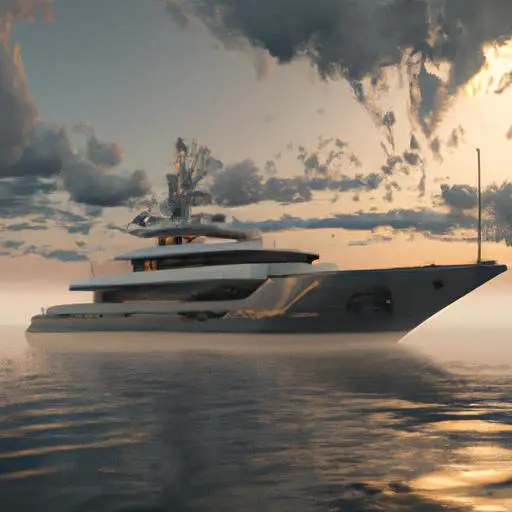
If youre looking to master the art of navigation on the high seas, then understanding the mechanics and advantages of superyacht stabilizers is essential.
This comprehensive guide will provide an in-depth look at these sophisticated marine devices, from what they are and how they work to the different types available and how to maintain them.
Stabilizers are essential pieces of equipment for any yacht, adding a layer of security and comfort to your voyage.
Read on to learn more about how these powerful systems help make your journeys smoother and safer.
Table of Contents
Short Answer
Superyacht stabilizers are designed to reduce the rolling motion of the boat in heavier seas.
They are usually mounted on the sides of the boat and consist of fins that extend downwards into the water.
When the boat is moving, the fins create drag that counteracts the rolling motion, reducing the impact of the waves on the boat.
The stabilizers can be adjusted to provide more or less resistance depending on the size and strength of the waves.
What Are Superyachts?
Superyachts are luxury vessels that are typically used for recreation and cruising.
They are usually larger than other types of vessels, ranging from 40-200 feet in length, and are equipped with state-of-the-art amenities and technology.
Superyachts are typically used for extended trips, and they have the capability to travel long distances in comfort and luxury.
Superyachts are also equipped with complex and expensive stabilizer systems, which are designed to provide greater stability and comfort in rough seas .
Stabilizer systems use fins or wings that are located beneath the hull of the vessel.
These stabilizers work using a combination of gyroscopic and hydrofoil technology to reduce the effects of waves on the yacht.
This helps create a smoother ride and a greater sense of comfort and stability, even when the yacht is in rough seas.
Stabilizers are powered either hydraulically or electronically, and they can also be adjusted to reduce the rolling motion of the yacht, providing a more comfortable ride.
What Is a Stabilizer System?

A stabilizer system is a mechanism that is used to reduce the rolling motion of a boat or yacht when it is in the open water.
This system is usually made up of fins, wings, or hydrofoils, and it is designed to counteract the effects of waves, wind, and currents on the vessel.
This allows for greater comfort and stability, even when the yacht is in rough seas.
Stabilizer systems can be powered by hydraulic or electric motors, and they can also be adjusted to reduce the rolling motion of the yacht, providing a more comfortable ride.
The fins or wings are located beneath the hull of the yacht, and they use gyroscopic and hydrofoil technology to reduce the effect of the waves.
The fins or wings are usually made out of stainless steel and are designed to generate lift when the yacht moves through the water.
This lift helps to counteract the motion of the waves, providing a smoother ride.
The fins or wings can be adjusted to provide the right amount of lift, and this can be done by a trained technician or by the captain of the vessel.
The stabilizer system also works in conjunction with the vessels other systems, such as the rudder, propulsion system, and trim tabs.
These systems work together to reduce the rolling motion of the yacht and provide a smoother ride.
In addition, the stabilizers also provide additional stability in rough seas, which allows the yacht to move more safely and comfortably.
Overall, stabilizer systems are an essential component of superyachts, and they provide a smoother ride and greater stability, even in rough seas.
They are powered by hydraulic or electric motors and can be adjusted to provide the right amount of lift.
This creates a smoother ride and allows for greater comfort and stability, even when the yacht is in rough seas.
How Do Stabilizers Work?
Stabilizers are designed to reduce the effect of waves on a superyacht, creating a smoother ride with greater comfort and stability.
In order to achieve this, stabilizers use fins or wings that are located beneath the hull of the vessel.
They rely on a combination of gyroscopic and hydrofoil technology to reduce the rolling motion of the yacht, creating a steady and comfortable ride even in rough seas.
The fins or wings of the stabilizers work by creating lift on one side of the yacht, and drag on the other.
This creates a counter-force to the rocking motion of the waves, allowing the yacht to stay steady.
This counter-force is also adjustable, so that it can be adjusted to create the desired level of stability.
In addition to the fins or wings, stabilizers also use gyroscopic technology.
The gyroscopes detect the rolling motion of the yacht, and then create a counter-force to reduce the motion.
This helps the yacht stay steady and provides a more comfortable ride.
Finally, stabilizers are powered either hydraulically or electronically.
Hydraulic systems use pumps to push hydraulic fluid through the stabilizer system, creating a counter-force to the waves.
Electronic systems use electric motors to move the fins or wings, creating a counter-force to the waves.
Both systems are effective, and the type of power source chosen is often determined by the size and type of vessel.
The combination of gyroscopic and hydrofoil technology, along with hydraulic or electronic power sources, helps to create a smoother ride with greater comfort and stability.
Stabilizers are an essential component of any superyacht, and they provide a more enjoyable experience for passengers.
Types of Stabilizers

Stabilizers are an essential part of any superyacht, as they help to reduce the impact of waves on the vessel and make the ride smoother. There are two main types of stabilizers used on superyachts: hydraulic and gyroscopic.
Hydraulic stabilizers use a series of fins or wings which are located beneath the hull of the vessel.
These fins are powered hydraulically, and they work by redirecting the water flow around the vessel, providing a more balanced ride.
This type of stabilizer is most often used in smaller vessels, as they require less power than other systems.
Gyroscopic stabilizers, on the other hand, use a combination of gyroscopic and hydrofoil technology to reduce the effect of waves on the yacht.
They work by using spinning weights, called rotors, which create a centrifugal force that counteracts the force of the waves.
This type of stabilizer is most often used in larger vessels, as they require more power and are more expensive than other systems.
Both types of stabilizers can be adjusted to reduce the rolling motion of the yacht and provide a more comfortable ride.
The fins or wings can be adjusted according to the type of sea conditions and the size of the vessel, and the gyroscopic rotors can be adjusted to create the desired amount of force to reduce the rolling motion.
In addition to the two main types of stabilizers, there are also other types of stabilizers available for superyachts.
These include active fin stabilizers, which use computer-controlled fins to reduce the effect of waves on the yacht, and air-assisted stabilizers, which use air bladders to reduce the rolling motion of the yacht.
Regardless of the type of stabilizer used, they all work to reduce the impact of waves on the yacht and create a smoother ride.
Superyacht stabilizers are an essential part of a luxurious vessel, as they provide comfort and stability even in rough seas.
Benefits of Stabilizers
Stabilizers are an essential part of the superyacht experience, providing a smoother ride in rough seas and reducing the rolling motion of the vessel.
Stabilizers can also provide a number of other benefits, including improved fuel efficiency, increased comfort, and improved safety.
With improved fuel efficiency, superyachts can cruise for longer periods of time, allowing passengers to explore the open ocean with less hassle.
Additionally, stabilizers can help reduce the strain on the vessels engines and other components, allowing the yacht to perform better and last longer.
The increased comfort provided by stabilizers also allows passengers to enjoy a more relaxed journey, with fewer bumps and jolts during the trip.
Finally, stabilizers help keep the yacht more stable in rough seas, reducing the risk of accidents and ensuring a safer experience for everyone on board.
How Are Stabilizers Powered?

Stabilizers are powered either hydraulically or electronically, depending on the type of system installed on the superyacht.
Hydraulic stabilizers are powered by a hydraulic motor, which is connected to the stabilizer fins located beneath the hull of the vessel.
This motor is responsible for providing the power required to move the fins, creating a stabilizing effect.
The fins then produce a lift force which reduces the roll of the superyacht.
Electrical stabilizers are powered by an electrical motor, which is connected to a generator.
The generator is responsible for providing the electricity needed to power the fins, which reduces the roll of the superyacht.
This type of stabilizer system is more complex than a hydraulic system, but it can provide greater control and more precise adjustments.
In addition to being powered hydraulically or electrically, stabilizers can also be adjusted to reduce the rolling motion of the yacht.
This is done by adjusting the angle of the fins, which can be done manually or with the help of an automated system.
By adjusting the angle of the fins, the lift force created by the fins can be adjusted to provide a smoother ride and reduce the amount of rocking motion.
This is an important feature of stabilizers, as it allows for greater comfort and stability even when the yacht is in rough seas.
Adjusting and Maintaining Stabilizers
When it comes to keeping a superyacht stable on the water, one of the most important parts of the equation is adjusting and maintaining the stabilizers.
This process can be done manually or with the help of an automated system, depending on the type of stabilizers being used.
Manual adjustments involve setting the fins or wings of the stabilizers to the desired position.
This is done by using levers or knobs, which can be adjusted to raise or lower the stabilizers and change their angle.
This helps to create the right amount of lift and drag needed to keep the yacht stable.
For automated systems, the stabilizers are connected to a computer that is programmed to adjust the fins or wings based on the conditions of the water.
This allows for a more precise adjustment than manual methods, and it is usually used on larger superyachts.
Regardless of the method used, it is important to properly maintain the stabilizers in order to keep them in top condition.
This includes regularly checking for any damage, debris, or corrosion, and ensuring that the fins or wings are properly aligned.
Additionally, it is important to make sure that the hydraulic or electric systems are in working order, as these are essential for operating the stabilizers.
Finally, it is important to remember that stabilizers are not a cure-all for rough seas, and they should be used in combination with other techniques, such as reducing speed and avoiding areas of strong wind and waves.
However, when used correctly, stabilizers can be a highly effective way to reduce the effects of waves and enhance the overall comfort and stability of a superyacht.
Final Thoughts
It’s clear that superyacht stabilizers are a complex piece of equipment that are essential for a comfortable and enjoyable ride.
These systems use gyroscopic and hydrofoil technology to reduce the effects of waves and create a smoother ride.
They are powered either hydraulically or electronically, and can be adjusted to reduce the rolling motion of the yacht.
All of these benefits combine to make the superyacht experience truly luxurious and enjoyable.
If you’re looking for a smooth and comfortable ride, make sure to install a superyacht stabilizer system.
James Frami
At the age of 15, he and four other friends from his neighborhood constructed their first boat. He has been sailing for almost 30 years and has a wealth of knowledge that he wants to share with others.
Recent Posts
Does Your Boat License Expire? Here's What You Need to Know
Are you a boat owner looking to stay up-to-date on your license requirements? If so, youve come to the right place! In this article, well cover everything you need to know about boat license...
How to Put Skins on Your Boat in Sea of Thieves? (Complete Guide)
There is a unique sense of pride and accomplishment when you show off a boat you customized to your exact specifications. With Sea of Thieves, you can customize your boat to make it look like your...
Heavy Weather Dynamics: Yachts in Following Seas
Last Updated on 03 November 2023 by Eric Bretscher
This article deals with some of the physics involved when a yacht is running before the sea, especially in heavy weather when waves are long and their front faces become steep.
Yachts running in heavy weather and following seas face challenges that are very dependent on the characteristics of the design; the ability of the crew to fully control the situation can be much reduced and this is why understanding the dynamics of the situation becomes quite important in order to anticipate properly.
Driving Forces in Following Seas
One immediate point of distinction when running before the sea with any small to mid-size craft is the acceleration usually imparted by approaching waves. Not all boats accelerate the same, but a constant is that – provided the wave face is steep enough – all boats will try staying ahead of the crest. Some do so elegantly, and others very poorly.
When a wave approaches a vessel from the stern, it is not so much that it pushes the hull forward – it doesn’t, but instead it simply creates a slope and the boat is carried down that slope by its own weight, like a cart rolling down a hill.

The red force is the driving component of the weight of the vessel. The steeper the wave, the greater it gets.
This contribution is surprisingly large when compared to sail driving forces. We can compute the approximate sail force from a jib of 14m² downwind in a 50-knot apparent wind as follow:
Wind speed v = 50 knots = 25.7 m/s Air density ρ = 1.29 kg/m³ Sail area A = 14 m² Approximate sail drag coefficient C D = 0.66
Driving force = 0.5 x C D x A x ρ x v² = 0.5 x 0.66 x 14 x 1.29 x 25.7² = 3936 Newtons
To get a feel for this, 3936 N is the force required to support a mass of 3936 / 9.81 = 401kg. In simple terms, the jib is pulling the equivalent of about 400kg (or 880lbs). The windage of the hull, mast and shrouds further adds to this.
Now, if the wave slope is a mere 3° only and the displacement of the yacht is 10 tonnes, the component of the weight that is aligned with the inclined sea surface – and the speed of the boat – is 10000 x 9.81 x sin 3º = 5134N, equivalent to 523kg or 1155lbs!
Downhill in following seas, gravity very quickly exceeds sail forces as the wave starts lifting the boat
If the wave face is very steep, ultimately, a large fraction of the weight of vessel can get converted into driving force; this is why even heavy hulls with unlikely shapes can be seen getting on the plane in front of steep waves in heavy seas.
For small angles, this drive originating from the weight of the craft is essentially proportional to the slope of the wave: for a 6° down angle, the force would nearly double. If the boat doesn’t accelerate readily, the wave keeps catching up with the hull, lifting the stern further and the driving component of the weight keeps increasing, trying to accelerate the boat anyway.
The crew’s ability to control driving forces is essentially limited to sail forces and – unfortunately – those may at times represent a small fraction only of the total propulsive force incurred by the craft. Hence the well-known risk of “losing control” while running in heavy weather. The answer, however, is not automatically looking for ways to “apply the brakes”.
The Effect of Hull Resistance
Understanding the concept of hull resistance in the context of running downwind is crucial: ultimately, hull resistance is what determines how far the driving force is allowed to rise.
As the total driving force grows larger with the slope of the wave getting steeper, boat speed increases markedly, and so does hull resistance. Once hull resistance matches the driving force, an equilibrium is reached and speed stabilises.

Once hull resistance (purple) equals the sum of the driving forces (red), speed stabilises.
If hull resistance increases quickly enough in relation with speed, the driving force may not be sufficient to keep the boat in front of the wave crest; this happens all the time to all yachts in light and moderate conditions. As long as the face of the wave is not too steep and the crest is not breaking, the wave can pass underneath the boat without issues. However, if the wave rears up, curls and breaks, the near-vertical front face and crest area are dangerous places where to be.
In the case of a breaking sea with a steep front face, the more easily the boat accelerates, the further away it remains from the turbulent water in the crest. A high-resistance hull requires a higher driving force and will ride higher up on the wave, down a steeper slope, often surging forward only as the crest arrives behind. This is a characteristics that is normally easily detectable long before sea conditions become dangerous.

Hull resistance is the most important factor in determining whether a yacht will keep ahead of a dangerous crest or not.
Different hulls present different resistance characteristics as speed increases. The key determining factor in terms of how resistance increases with speed is hull shape. Displacement in itself adds to resistance, but it also contributes to driving forces downhill.

Easily-driven hulls with a suitable shape see their resistance increase more gradually and flatten out as they reach planing speeds. A high-resistance hull may or may not accelerate; in all cases, the forces involved are much more considerable.
Deep hulls with slack bilges and narrow sterns usually are the worst when it comes to building up resistance due to poor stern hydrodynamics and their inability to lift and accelerate regardless of the driving force; those essentially follow the solid orange curve above and will not accelerate meaningfully, no matter what. Most heavy small yacht hulls still feature reasonably firm bilges for stability reasons and their bottom surfaces are able to provide some dynamic lift above a certain speed. A lot of cruising yachts fall into that category. At some point along the orange curve, they lift and accelerate quite suddenly, following the dashed line.
Modern hulls with flatter stern sections and medium displacement progressively move towards the purple curve. Those are easier to drive at all speeds and don’t face such a marked transition between displacement speeds and a semi-planing regime. Provided other conditions such as course stability are also met, those are by far the safest and most predictable for running in following seas. It doesn’t take a light racer to run at speed in front of a steep sea, mainly suitable stern shapes and a moderate length/displacement ratio.
Many cruising boats have been designed under the assumption that speed was unimportant, or even that the boat was not and should not travel fast in the case of some well-known double-ender designs. This was overlooking the simple fact that the crew has little or no control over driving forces in a heavy following sea, and by extension little or no control over the speed the hull may actually achieve.
While a yacht doesn’t need to be generally fast to remain safe, it does need to be able to accelerate and reach high speeds at times without becoming dangerous
Typical Accident Scenarios in Following Seas
There is no good or safe way of getting caught into a breaking crest; there is too much energy being expended and too much uncertainty about what the vessel might do.
Some designs fail to accelerate as seas get steeper and do get caught in the crests; at this point they experience various difficulties such as maintaining steerage while surrounded by confused white water, or shipping seas over the stern. Another hint is hull trim in relation with the sea surface: is the hull riding bow up or burying the stem when accelerating? Those are very powerful leading indicators of what is likely to take place in bigger, steeper seas. As always, careful observation and understanding of the dynamics of the boat in the sea are everything and so-called “knowledge” is hardly relevant.
A pitchpole happens when a boat rolls over longitudinally, end-over-end. It is the most publicised, feared and also least common cause of accident at sea.
The most dangerous situation develops in heavy following seas, when the front face of the waves can become overwhelmingly high in relation with the length of the vessel. In this instance, a boat that hasn’t managed to accelerate and outrun the crest can pitch down by the bow severely, and even engage the foredeck in the sea.
I once met the ex-skipper of a Contessa 32, who had left South Africa bound for Australia via a moderately southern route across the Indian Ocean. Along the way, a severe westerly blow developed, accompanied by heavy following seas. She described to me the boat surging in front of the waves out of control with the bow and part of the foredeck under green water. Shortly after, it pitchpoled and was left dismasted and seriously damaged structurally. Reaching Western Australia under jury rig took several weeks. Over a year was spent on the hardstand repairing the damage incurred.
A very interesting and detailed account of an accident in following seas was provided by Miles Smeeton following his attempted passage from Australia to England in 1956 [1]. His heavy 46′ ketch Tsu-Hang rode up the near-vertical face of a huge following sea in the South Pacific and pitchpoled. It couldn’t outrun it and couldn’t ride it either. On a subsequent attempt, following ill-advice, he stopped and hove-to in heavy seas; he was readily rolled and significantly damaged again in conditions that were far less extraordinary than the first time.
In spite of the examples above, yachts that have actually been pitchpoled are very rare exceptions. Most yachts don’t track straight long enough to get into this situation, or they engage the forebody into the sea, yaw and then partly fall to one side before getting rolled and capsized more conventionally.
Broaching takes place when a vessel running before the sea no longer tracks straight and comes beam-on into the sea. This is the most common incident while running before steep seas.
As developed earlier, as the wave approaches and the slope increases, a fraction of the weight of the vessel adds to the driving force from the rig and windage, causing the boat to accelerates. If everything goes well, the hull rides bow up and keeps up with the crest until the wave has finished breaking.

Hull resistance (purple) is equal to the sum of the driving forces (red). If the boat travels at the same speed as the wave, it will run until the wave slope reduces; otherwise the crest will keep catching up.
When hull shape is inadequate or when a bow-down attitude develops as speed increases, hull resistance can shift forward drastically while the driving component of the weight is still acting through the centre of gravity, further aft.

This boat failed to accelerate enough and is now running down a steeper slope. The driving component of the weight acting through the centre of gravity is dominant; resistance has shifted forward due to a bow-down attitude or the characteristics of the hull shape itself.
If the boat yaws for any reason, the component of the weight parallel to the surface is no longer aligned with the direction of travel and contributes to amplifying the rotation.

Any small tendency to yaw is immediately amplified by an unstable force moment between the weight of the boat still acting downhill and the hull resistance that opposes forward speed. If the rudder is unable to overcome the yaw moment, the boat will come beam-on to the wave crest.
An inadequate hull shape is one where hydrodynamic pressure moves towards the forebody as speed increases. This compromises course stability and the key risk is a broach that brings the vessel beam-on into the crest. At this point, the boat is no longer running before the sea and this case is discussed in another article dealing with yachts caught in beam seas . The most common outcome following a high-speed broach in a following sea is getting dumped into the trough from the crest, or rolled, or both.
Unlike often suggested, in a following sea, it is not the oncoming waves pushing on the stern of the yacht that cause course instability. Most yachts that are unstable downwind start yawing long before the crest gets anywhere near the stern. It is the displacement of the hydrodynamic resistance forward that leads to an unstable equilibrium of the forces acting on the vessel.
Course stability in following seas and hull resistance are also the object of a related and more detailed discussion in the design of the Nordkyn hull , where superb seakeeping properties were sought not only downhill, but at all wind angles.
Practical Implications
Designs featuring high-resistance hulls generally become dangerous in following seas at some point. They either end up tangled in the breaking crests or accelerate at steep downward angles on the faces of the waves, at the risk of engaging the bow into the sea. Conversely, experience shows that vessels able to accelerate and keep up with problematic seas don’t ship water over the stern and simply stay ahead of the waves for as long as they break.
With considerable drive originating from the weight of the boat, sail choices made by the crew in following seas primarily impact the minimum speed the vessel keeps on the back of the waves and in the troughs. Steep seas still drive the hull close to the speed they travel at and it is not unusual to see even rather sedate cruising designs surging to 20-25 knots while carrying little or no sail at all in a stiff blow in the high latitudes. As long as they ride bow up, track and remain steerable, all is as good as it gets.
This is not always the case however. Most of the problems experienced running in following seas originate from hull shape, with a special mention for the geometry of the stern sections, sometimes compounded by poor rudder design. This means such issues are not readily overcome by choices the crew can make, other than staying within the capability limits of the design. Attempting to run before heavy seas in a vessel that buries its bow or yaws uncontrollably is a near-guaranteed accident before long.
My 9-metre sloop Yarra was once hauling upwind in a huge sea under #2 jib alone in the middle of the North Atlantic. This sail configuration left the helm largely neutral. Half-way into the night, one of the steering vane control lines attached to the tiller somehow parted, the helm moved around and by the time I had realised something was happening and jumped outside, the boat was way off course.
Now, this is where things became interesting. I found the sloop broad-reaching at high speed down huge seas and the small jib sheeted in hard forward was now filling from the leech, sometimes taking aback momentarily, and essentially steering the boat in spite of the loose tiller. I couldn’t really improve on that so, working as fast as I could, I mended the steering line in the dark. During all that time, it never once showed even a hint of a tendency for broaching; the sail forward wouldn’t allow it. I returned the boat on its upwind course, but also made a mental note of this interesting discovery. Subsequently, I used this concept at the odd occasion by sheeting a storm jib from both sides on the centreline of the boat, using it for steerage rather than propulsion straight downwind. It provided a huge improvement in course stability and safety in following seas, but only worked in very strong winds. Provided the sail was sheeted in very flat, the inevitable and repeated gybing was of no concern.
Accidents in following seas happen very quickly and are often violent as boats tend to be thrown forward from the crests. Inexperienced skippers are often fooled by the relative peace and comfort that comes with running before the sea and don’t read the warning signs, or won’t act on them, sometimes by lack of an alternative strategy.
One alternative strategy is turning around and punching into it under sail; some designs that don’t handle at all in following seas may simply have no other safe option; designs that won’t run and won’t sail upwind either can end up out of options altogether and shouldn’t be there in the first place.
Towing Drogues
Drogues are anything attached to the stern that will cause increased drag at speed. It can range from a long warp, some warp and chain or more sophisticated and purpose-designed devices like a Jordan Series Drogue, a collection of little parachutes attached to a long warp.
Attempting to tow drogues in heavy weather is a double-edged sword:
- By increasing drag and overall resistance, a drogue pulls the yacht further up the slope of the wave as it approaches, into a steeper gradient and closer to the broken water of the crest.
- By introducing an additional resistance force located as far aft as practical, the drogue can mitigate or cancel the shift in hydrodynamic resistance towards the forebody of some hulls. This can greatly help with preventing excessive course instability from developing.

Towing a drogue shifts the average position of the resistance forces closer to the centre of gravity and helps cancelling unstable yaw moments, but at the cost of increasing total resistance and pulling the vessel up the wave slope.
I personally don’t favour the use of drogues in general. I wouldn’t think of deploying anything alike unless there was a clear-cut and observable reason for doing it. I will rather stabilise tracking using aerodynamic means, as described further up, than slow the hull down in the sea. Different boats exhibiting different properties in following seas may be forced to opt differently.
Towing a suitable drogue can provide considerable benefits for boats that lack the course stability required to run in following seas. How much and how long for is a matter that will still depends on the hull design; drogue or not, the boat will still accelerate in front of a wave steep enough and may still bury the bow.
Once deployed, most drogues aren’t practical to retrieve before conditions subside due to the enormous forces involved. If the strategy doesn’t work out or becomes unsuitable, there are few options but cutting them away.
Historical Considerations
Historically, a variety of designs demonstrated sufficient capability for avoiding damage by outrunning heavily breaking seas. One of the first adepts of such a tactic was the Argentinian Vito Dumas [2] in the early 1940s on board the 9-metre Legh II who seemed to have acted from instinct and observation, followed by Bernard Moitessier some 20 years later on board his 12-metre ketch Joshua as he got on the verge of an accident towing warps and trying to slow his boat down [3]. Both vessels were relatively flat-bottomed double-enders with a very firm turn of the bilge, which essentially enabled them to plane ahead of exceedingly steep waves, and neither were overloaded, an aspect Moitessier was adamant about as he already had to contend with a heavy steel hull.
A body of rhetorical justifications was developed long ago about how a hull should not accelerate and split the breaking crests by the stern. While these theories succeeded in relatively gentle and well-formed seas with modest crests, they never managed to cater for a steep wall of water chasing a yacht at high speed and – unsurprisingly – the designs they produced also failed to cope spectacularly in such situations. The concept was flawed and the argument is senseless today. Knowledge, materials and construction methods all readily allow producing strong moderate displacement hulls with shapes that are far superior for accelerating and keeping ahead of waves faces that are simply too steep to be successfully negotiated in any other ways.
Since the early 1990s, the short-handed offshore ocean racing circuit has probably put more small boats in huge following seas than ever before by venturing eastwards deep into the Southern Ocean for weeks at a time, but the strategy that was followed by Vito Dumas in the early 1940s and then more explicitly documented by Bernard Moitessier in the late 1960s using an unlikely design still stands unchallenged. Today’s boats are better at implementing it.
Running before the sea in heavy weather does remains the ultimate option for a vessel once sea state rules out all other strategies, so if the accent is placed on survivability and sailing in latitudes where truly extreme conditions are encountered from time to time, selecting a design that does handle following seas in a sound and predictable way is essential.
Read additional articles about seamanship and heavy weather dynamics.
[1] “Once is Enough”, Miles Smeeton [2] “Alone Through The Roaring Forties”, Vito Dumas [3] “Cape Horn: The Logical Route”, Bernard Moitessier
6 Responses to “Heavy Weather Dynamics: Yachts in Following Seas”
Dear Mr Bretscher,
In my search for a seaworthly boat I am (till now) attracted by the Contessa 32. By chance I found your fantastic website from which I learned a lot about sailing hydrodynamics. What I do not understand is your statement “Narrow and pinched stern lines were always a mistake, they gave boats that were unable to accelerate in following seas and became unmanageable as waves caught up with them” Is this result of the wake created by the classic forms of non planing hulls? On the other hand broad sterns will be more lifted up by the wave coming from behind and so putting the bow downwards.
Best Regards
Hello Marc,
Pressure (or wave-making) resistance on a hull has two main contributors. First, the hull needs to part the water forward and this results in the pressure wave known as the bow wave. Next, the water needs to “close” back behind the boat. This can never be achieved perfectly because a turbulent layer of water (the boundary layer) develops and grows along the hull and it prevents the streamlines from precisely following the hull shape astern. Stern pressure pushes the boat and reduces resistance, but the existence of the boundary layer means that the stern pressure can never be as high as the bow pressure and the difference is at the origin of the pressure resistance. Now, if the stern lines are very curved, then the flow can stop following the shape of the hull and eddies and water recirculation appears in this separated region. When this happens, it causes a much more significant loss of pressure in the stern region.
Pinched stern lines cause this to happen once the speed reaches a limit. People have observed this behind Colin Archer-type hulls for a very long time and even offered theories about the “benefits” of that strange wake (!), but it is complete garbage. Deep buttock lines suddenly curving upwards before the transom can also cause flow separation even with a broad stern. Many modern boats are like this because the designer wanted more depth inside to fit the engine, accommodation etc, but it is very unfortunate in terms of hull hydrodynamics. The Halberg Rassy 44 is an example of this, the hull is completely distorted and deepest way aft…
When significant pressure loss occurs around the stern, the positive pressure at the bow is no longer compensated for and resistance moves forward. This promotes course instability and broaching. This is why many old designs become completely unmanageable and dangerous in following seas. This includes many IOR-era designs, not just the old double-enders etc.
The shape of the stern hardly makes any difference to trim. Have you ever seen a boat with the stern deeply immersed in a wave and the bow up or flat? The trim is determined by the position of the boat on slope of the wave front and this is mostly related to hull resistance. What makes all the difference in the end is whether the steep part of the wave can catch up with the boat and pitch it bow-down or not. If the hull is slippery, it will keep ahead of a steep crest with a sudden burst of speed until it has smoothed out enough to be crossed. A large wave about the break has a vertical face near the top and it can’t be crossed by a small boat regardless of stern shape. If acceleration causes a massive resistance increase forward, then an accident has to follow.
I once met an English sailor who had sailed a Contessa 32 from South Africa to Western Australia in the late 1990s. She got into high winds and heavy following seas about half way and described to me that the boat was out of control with the foredeck completely underwater and the rudder unresponsive. What followed before long was rather violent because a wave lifted the stern even higher and the boat pitchpoled. Not only the rig was wiped out, but the hull suffered significant structural damage, including a fractured bulkhead. She eventually reached Perth under jury rig. Many Contessa 32s have sailed around in the Tropics, but true bad weather just doesn’t exist there. As far as I am concerned, it is a bad and a dangerous boat. Hindsight is always a wonderful thing of course, but – assuming that a Contessa 32 can point acceptably in high winds and heavy seas, a very open question – had she turned it around and sailed upwind, she might have come out better off because designs like this one just won’t run in heavy seas. Another one is the Cavalier 32, with pinched stern lines, but a fin keel this time. They become completely unsteerable in following seas and broach and I know of one that was also dismasted on the same passage while trying to run and eventually made Hobart under jury rig. Look for a boat with a reasonably straight run of the lines aft, a spade rudder or a very small skeg and a decent transom. It will handle much better at sea, even in good weather.
Another boat of a similar size is the Lotus 9.2 and quite a few were produced here in NZ. The rudder design is terrible, like a small barn door with a hinge in the middle, but apart from that these boats sail and behave quite well in the sea. A couple of years ago, I advised someone about the design of a new transom-hung rudder for it and we eliminated the skeg entirely. It turned it into a different boat, faster and much more responsive at the helm.
Best regards,
I have just come across this and find it very interesting having read many accounts of different strategies from Slocum, Voss, to Moitessier etc. In your reply above are you basically just saying pinched sterns cannot plane and when being driven too fast instead shift shift their CoR forward in trying to plane from a position further forward. Whereas a hull design with a sharp transom begins to plane without any changes in CoR?
And following that, surely then there is the risk ones on a plane that the boat will plough into the trough too fast and pitchpole? Should there not be some balance between outrunning them and running into the trough too fast, or are you refering to very very large wave periods?
Surely in short wave periods where the troughs can burry the bow would running with following seas be a bad idea no matter the hull design?
Any stern that has high curvature or steep buttocks lines will eventually suffer from flow separation as speed increases. The corresponding and sudden pressure loss means that the hydrodynamic resistance moves forward at that point. It is also important to understand that it is of course the underwater part of the stern that matters. Even a double-ender could have relatively flat and straight lines aft, if the design is light in particular. Conversely, many transom hulls have atrocious hull lines, because the buttocks are deep very far aft and then rise too quickly. The flow must be able to leave the hull in a near-straight line close to parallel to the surface.
In a typical following sea in heavy weather, the waves are well developed and near-invariably travel faster than the boat. When an overly steep wave chases the stern, the boat must be able to accelerate, but it only keeps up with the crest momentarily until is flattens out, it doesn’t outrun it. The power required to do so isn’t there naturally. As a result, hulls don’t plow into the troughs, but they can plow into a secondary crest in the trough in some circumstances. This is where sufficient freeboard and volume forward become important safety factors with correct handling and strategic choices from the crew.
This must not be confused with the situation where the stern is lifted so high that the bow engages into the sea, or the whole boat is picked up by the breaking crest and thrown forward with various unhealthy results. This results from a lack of acceleration and speed to keep the hull out of the steep wave slope.
In the developing stages of a gale, waves can be both steep and short, but this means they are also slow. Fast boats can sometimes find themselves stuck in a trough, travelling at the speed of the sea and unable to exceed it. This happened to me with Nordkyn doing 14 knots running in 40 knots of wind south of Stewart Island (NZ) and I had to reef further because I was driving the bow into the back of the wave ahead of me while being pushed by the front of the one following me. Travelling in the trough at the speed of the sea was both safe and comfortable. I later mentioned this to a friend who is a commercial fisherman in the area and, in these conditions, they also have to throttle back with their large semi-planing vessel, because they are unable to overcome the wave in front of them in spite of having 1300HP available.
Outrunning the crests and climbing the back of the wave in front can happen, but it is uncommon. Firstly, the wave period T must be relatively short (because the velocity of the wave is V = 3 x T, V in knots, T in seconds) and the waves must be relatively low and well-formed. Secondly, the crew needs to drive the boat like a bat out of hell to succeed in sailing uphill at high speeds. I did this once before a big SW heading up the East coast of the South Island (NZ). Hovering around 14.5 knots, I was able to catch up with the crest in front of me and plunge on the other side, which is quite exhilarating. It can come with its own set of risks and it is an acute matter of judgement of course. Breaching a crest on the verge of collapsing can cause the boat to fall off it and possibly pitchpole. There is a fine balance between the length of the boat and the size of the sea.
In conclusion, running before the sea with a hull that is hydrodynamically good shouldn’t prove to be much of an issue, but controlling its speed can be important. While some ultra-light racers may go too fast even with no sail in extreme winds and run into trouble due to design issues such as a lack of buoyancy forward, the common problem for cruising yachts is becoming unmanageable because they are in fact unable to go fast enough. For these, the speed causes the problems, but the root cause is in the shape of the hull and slowing down doesn’t actually lead to a solution.
Kind regards,
Thank you for your excellent analysis. Was omission of strategies employing a sea anchor intentional?
Yes. Sea anchors can prevent drift, but have no role in heavy weather. If the weather is truly bad – which means that the sea state is dangerous – sooner or later the sea anchor will be required to pull the boat through the vertical face of a wave advancing at 15 to 30+ knots. This is not going to happen: something has to fail because the forces at play are unmanageable. The boat then ends up lying ahull in a breaking sea, the absolute worst position to be in.
I only ever met one person who actually deployed a sea anchor in a truly heavy sea, the boat was a Cavalier 32 out of South Africa. It initially helped with keeping the bow into the sea. The warp parted before long and then the boat was rolled and dismasted almost immediately. It made landfall in Australia under a jury rig many weeks later.
It is a stupid strategy, because it is akin to driving at speed down a dead-end street with no brakes. Once you have thrown this over the side, you can’t retrieve it and the crash is unavoidable.
There was a time when yachts were simply unable to sail either upwind or downwind past a point because of their design and construction and became completely unmanageable in heavy weather. People understandably looked for any possible way to stop them from lying exposed beam-on in the sea. Today’s reality is that a yacht that can’t point in high winds has no place in a blow offshore, because it is dangerous by design. We see more and more boats made unsafe because their owners pile up ridiculous windage (and weight aloft) without a clue about the consequences this has on seakeeping.
Leave a Reply Cancel reply
Your Comment
Name (required)
E-mail (required)

These Boats Are Really Big, but Barcelona Has the Room
The city has become a hub for billionaires’ superyachts, banking on the strength of the “blue economy.”
A huge yacht under repair in Barcelona, Spain, which has become a hub for superyachts. Credit... Samuel Aranda for The New York Times
Supported by
- Share full article

By Raphael Minder
- Jan. 10, 2022
BARCELONA, Spain — Launched less than a year ago, the 460-foot-long, eight-deck Solaris is one of the newest of the superyachts that are the floating palaces of the sea. It has a helipad, of course, plus a swimming pool and all the other high-tech amenities required by its Russian billionaire owner, Roman Abramovich .
But on a recent morning in Barcelona, the $600 million Solaris was out of the water, wedged into a dry dock, as workers toiled underneath its light-gray hull. They were fixing its finlike stabilizers, which help steady the massive vessel in rough seas but retract when there are no swells. At the opposite end of the boatyard, another giant, the Sea Rhapsody, was getting a final checkup before being put back into the water.
As the rich have gotten richer during the pandemic, their boats have gotten larger and more expensive — and when these over-the-top superyachts aren’t taking their owners to private holiday spots in the Caribbean and the Mediterranean, they need a place to drop anchor and deal with repairs.

And it is here that Barcelona, whose days as a commercial shipyard faded years ago, sees an economic opportunity.
Barcelona has turned itself into a hub for these luxury vessels, combining a private marina that is investing 20 million euros ($22.7 million) this year to turn itself into the largest port reserved for superyachts in the Mediterranean and maintenance facilities that can hoist behemoths out of the water and then summon a small army to do repairs.
And it doesn’t hurt that Barcelona offers the ships’ crew members downtime in one of the Mediterranean’s biggest tourism destinations.
Attracting billionaire yacht owners is only a small part of Barcelona’s efforts to tap into the “blue economy” of the sea, said Jaume Collboni, the deputy mayor. Barcelona’s port authority recently approved the construction of a new terminal for cruise ships, set to open in 2024. The city is also overhauling the seafront area that was developed for the Summer Olympics of 1992, which Barcelona hosted.
The pandemic was a huge blow for a city that normally welcomes millions of visitors. It showed that “diversification is becoming very important,” Mr. Collboni said. “When tourism dropped down to zero, some parts of the city were heavily affected, and we have needed to find new jobs, also for a less qualified work force.”
At the same time, the spread of the coronavirus gave the world’s billionaires a new excuse for keeping their distance from other people, a role perfectly suited for superyachts.
Worldwide about 5,700 yachts are over 30 meters long (just under 100 feet), and this fleet is set to expand 15 percent by 2025, according to industry projections . At the pinnacle of this market are about 370 megayachts of over 60 meters, whose number has risen 70 percent in the past decade and is forecast to reach 500 in about seven years. Construction yards have been struggling to keep up: The order book for superyachts is full until 2025.
MB92, the company that operates Barcelona’s superyacht maintenance facility, known as a refit yard, has 180 employees, but much of the labor is carried out by about 1,000 subcontractors whose jobs cover a variety of specialties, including painting, carpentry and insulation work. About 40 workshops are scattered around the yard, and during the peak repair seasons of spring and fall the yard can work on about 25 yachts at a time.
The yacht maintenance business has been jumping. MB92, which also owns a smaller yard in La Ciotat, France, reported revenue of €191 million (about $215 million) in 2021, up from €150 million in 2019.
Even if a superyacht is a striking showcase of wealth, owners expect those working for them to keep silent about their assets and whereabouts. When asked about the Sea Rhapsody’s destination once it left the yard, Henk Dreijer, the commercial director of MB92, demurred, suggesting that it was bound for “the Caribbean, but it could also be the Seychelles or somewhere else.”
“We work for people who like to be very discreet,” he added.
In Barcelona, which is led by a left-wing city government , not everybody welcomes the arrival of billionaires and their yachts, whose marinas are typically fenced off from the rest of the city’s waterfront.
“We are bringing in the richest people in the world, but they don’t spend their money in our local neighborhoods, they have yachts that fly the flags of tax havens, and they hire crews who are not from Barcelona,” said Gala Pin, a city lawmaker in Barcelona until 2019.
“We have also allowed private and very opaque companies to squeeze profits from public land and instead fence off access to a port area that should be enjoyed by all the citizens of Barcelona,” she added.
A decade ago, Ms. Pin and other residents held demonstrations to protest the initial project to develop Port Vell, a privately owned marina for luxury yachts. But Ms. Pin now concedes that the yacht business is very firmly anchored in Barcelona. Meanwhile, the city’s dwindling fishing fleet is squeezed into a small enclave, sandwiched between MB92’s yard and the superyacht marina.
Port Vell is in the midst of a major overhaul to become the largest superyacht marina in the Mediterranean. It is jointly owned by QInvest, a Qatari investment firm, and a group of investors led by Vagit Alekperov, the president of the Russian oil company Lukoil. Mr. Alekperov is also a partner in a fund run by Squircle Capital, a private equity firm based in Luxembourg. In 2019, Squircle bought a majority stake in MB92, the shipyard operator.
Even if the owners spend little time in Barcelona, the largest of these yachts have several dozen crew members who make lengthy stays and are “people with salaries that are generally higher than local salaries and money that they have not been spending on board,” said Ignacio Erroz, the director general of Port Vell. He said a PwC study commissioned by his company had estimated that Port Vell contributed €30 million a year to Barcelona’s economy.
Mr. Erroz forecast that Barcelona would continue to grow as a superyacht hub, in large part because “being able to anchor right in the heart of a big city is a major selling point.” But he also anticipated tougher competition.
“I think we will see many more existing ports adapting their infrastructure to welcome this kind of boat,” he said.
Raphael Minder covers Spain and Portugal, based in Madrid. He previously worked for Bloomberg News in Switzerland and for the Financial Times in Paris, Brussels, Sydney and finally Hong Kong. More about Raphael Minder
Advertisement

IMAGES
VIDEO
COMMENTS
Subscribe before you goOn the Mighty Saint-Lawrence, just off shore from Sainte-Anne-Des-Monts Quebec, a luxury yacht makes way in rough seas, plunging and r...
Heesen Yachts' 49.8m/ 163'4" superyacht Home facing high seas on the North Sea after she left Hellevoetsluis for Gibraltar. Video: © @thenauticallady & Dutch...
Motoryachts, especially superyachts and megayachts handle rough sea really well. When it comes to handling rough seas, luxury motor yachts come to the forefront with their exceptional seaworthiness and stability. Superyachts and megayachts, with their larger size and weight, offer a smoother ride in choppy waters.
Hallberg Rassy are known for being heavy, sturdy, seaworthy boats. This video shows Hallberg Rassy 48 Elysium in heavy weather off Cape Gris Nez, northern France in 2014. The yacht seems to be ...
Now, after more than a year of cruising the Med and Caribbean, Setton has decided to sell the military-grade Enmer - the name is French for "At Sea," with an asking price of about $2.35 ...
4. 'Galeocerdo' | 74.8 mph. Wally founder Luca Bassani designed the 118-foot Galeocerdo to maintain speed in rough seas. Launched in 2003 by Rodriquez Yachts, the boat racks up an eye-watering ...
The Douglas Sea Scale defines 'rough seas' as 2.5-4m/4.1-8.2ft with very rough conditions being 4-6m/13-20ft. At Southampton University tank tests showed that when a wave was 30% as high as the hull length, it was possible to capsize some yachts. However a wave as high as 60% of the hull length capsized all vessels.
SUPERYACHTS. Adorned with a mix of contemporary and modern design, the Sunreef Yachts superyachts range showcases a visual symphony of sophistication with exquisite craftsmanship. Experience state-of-the-art amenities, spacious suites, and breathtaking vistas from the expansive decks that reflect your unique style and preferences.
That said, with the right preparation and caution, superyachts can handle rough seas and still provide a comfortable and luxurious experience. Superyachts are equipped with stabilizers to reduce rocking and rolling in the waves. These stabilizers act as shock absorbers, dampening the effect of the waves and helping to keep the vessel steady. ...
Delivered in 2004 by Millennium Super Yachts, the 139-footer is powered by two Paxman diesel engines and two Lycoming gas turbines to produce a staggering 20,600hp and a breathtaking 67 knots (77.1 mph). ... Wally founder Luca Bassani designed the 118-foot Galeocerdo to maintain speed in rough seas. Launched in 2003 by Rodriquez Yachts, the ...
Superyachts can definitely cross the Atlantic - some with absolute ease. There are routes from the United States to Europe that stretch for just over three thousand miles, a distance which some superyachts can swallow up in no time. They're also big enough to handle any adverse Atlantic weather. Read on to learn more about superyachts and ...
Superyachts are floating paradises - but in rough seas, even the most well-designed interiors can become a potential hazard. Be sure to stow away loose items, securing furniture, glassware, and other accessories to prevent damage and ensure the safety of guests and crew alike.
The 40M Sunreef Explorer is a versatile multihull craft dedicated to discovering new horizons. Her propulsion options allow for transoceanic range and solid performance in rough seas. Blending elegance and modern technology, this luxury power catamaran can be heavily customized to match ambitious navigation plans.
To answer that question, we need to understand what rough seas really mean. When we talk about rough seas, we are referring to high winds and large waves. These conditions can be dangerous and challenging for any vessel, regardless of its size or type. However, superyachts are designed to withstand and navigate through such conditions with ease ...
The Weather Reports. The marine forecast is of vital importance to all boaters, especially yacht owners attempting to survive rough weather and hurricanes. Luckily, the NOAA National Weather Service provides these forecasts free of charge. Weather reports can warn yacht owners of impending storms and hurricanes so that they can be avoided.
Superyachts are typically used for extended trips, and they have the capability to travel long distances in comfort and luxury. Superyachts are also equipped with complex and expensive stabilizer systems, which are designed to provide greater stability and comfort in rough seas.
Sometimes you just get caught out.#nosmallcreator
Yachts running in heavy weather and following seas face challenges that are very dependent on the characteristics of the design; the ability of the crew to fully control the situation can be much reduced and this is why understanding the dynamics of the situation becomes quite important in order to anticipate properly.
Superyacht RYLAX, gets pummeled by big waves at Haulover Inlet and our drone is there to catch it getting tossed around. This superyacht is an Azimut 116" an...
Can superyachts handle rough seas? Superyachts are designed to handle adverse weather while on a yacht crossing. Different superyachts will come with different ratings on the range they are capable of and what sort of seas they can handle. However, the captain will often change the course of the vessel to avoid large storms or possible ...
A well-built superyacht must be not only beautiful to look at in the marina or at anchor in calm seas, it must also be an ocean-going and highly capable ship...
Jan. 10, 2022. BARCELONA, Spain — Launched less than a year ago, the 460-foot-long, eight-deck Solaris is one of the newest of the superyachts that are the floating palaces of the sea. It has a ...
In todays video.. Boats Ships & Yachts In Heavy Seas & Rough Waves CompilationThank you for watching! ⬇️Subscribe to our channel here ⬇️https://bit.ly/SUBSCR...